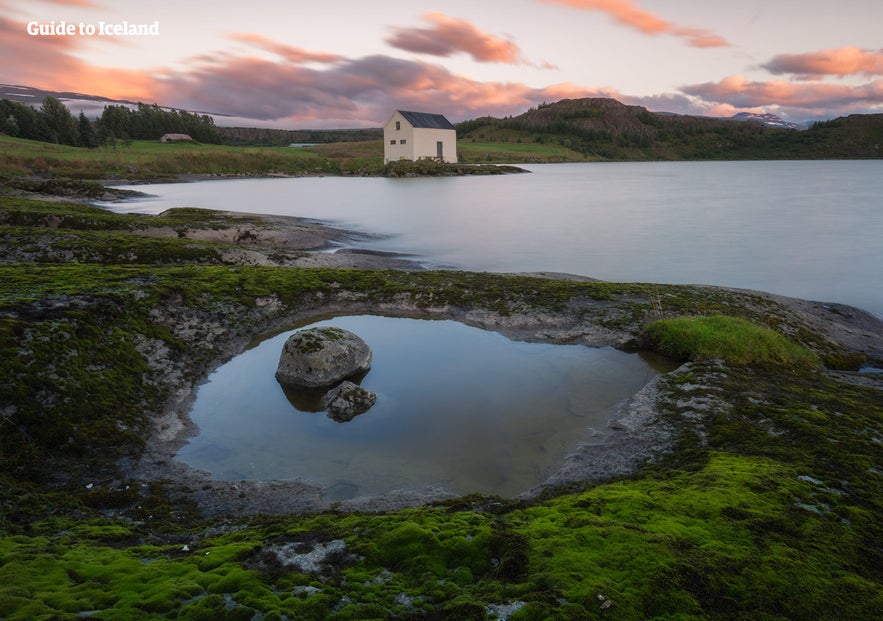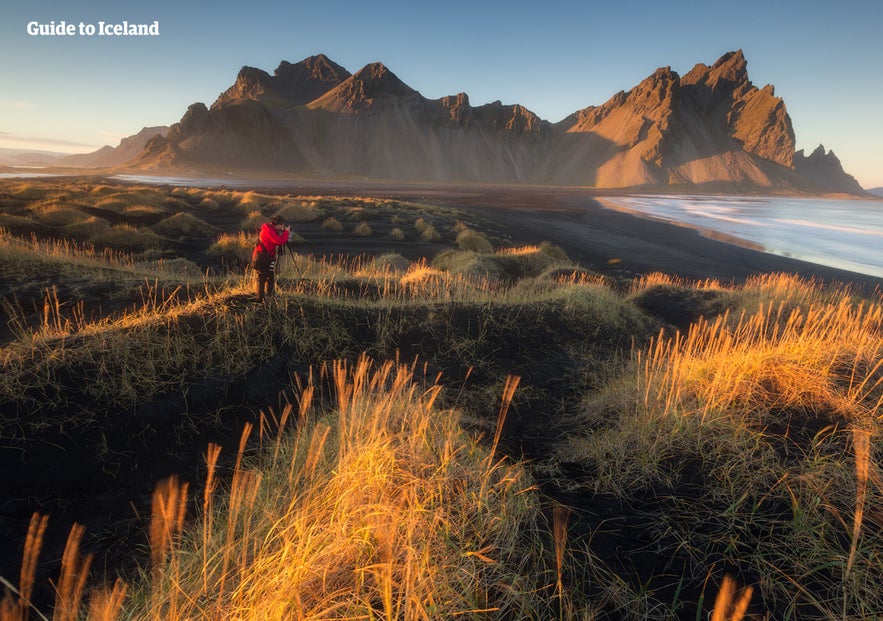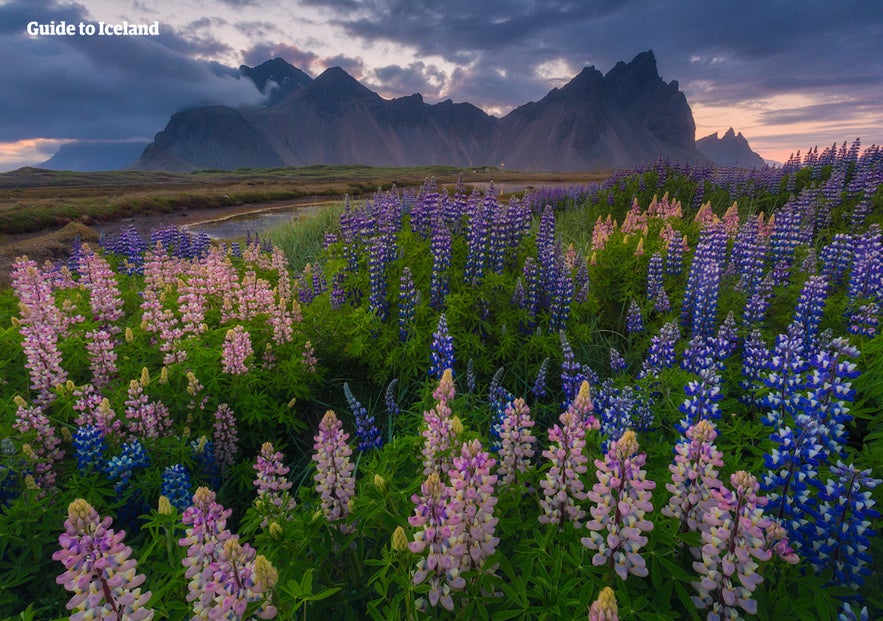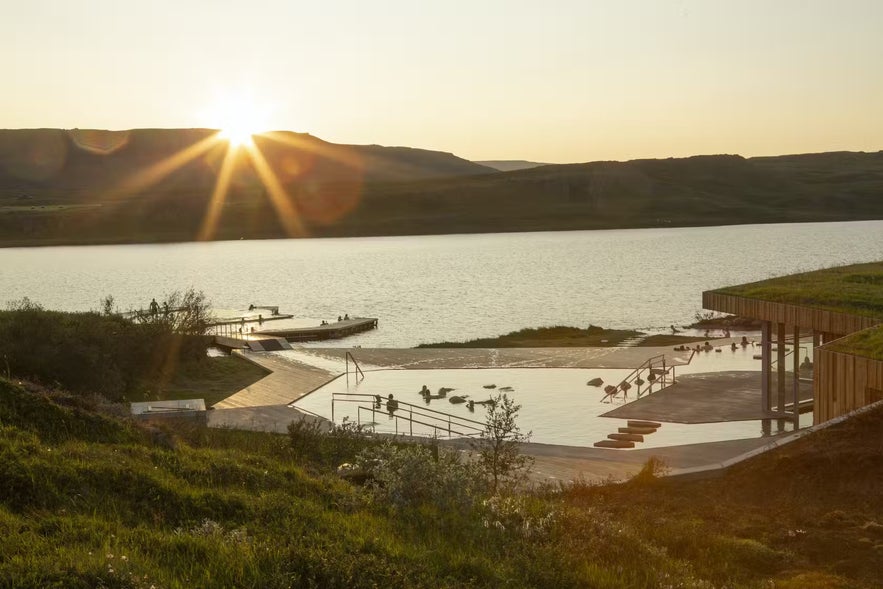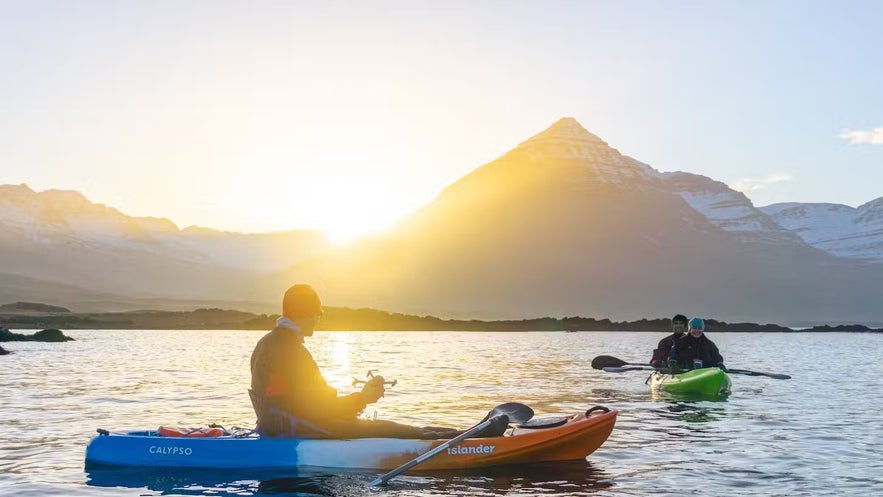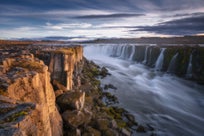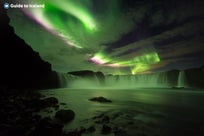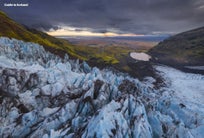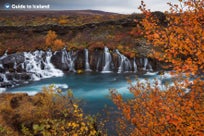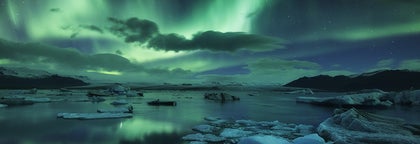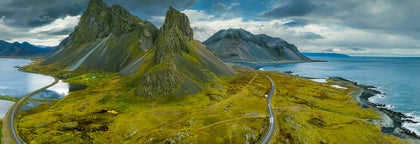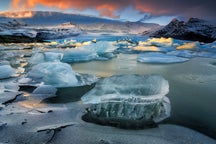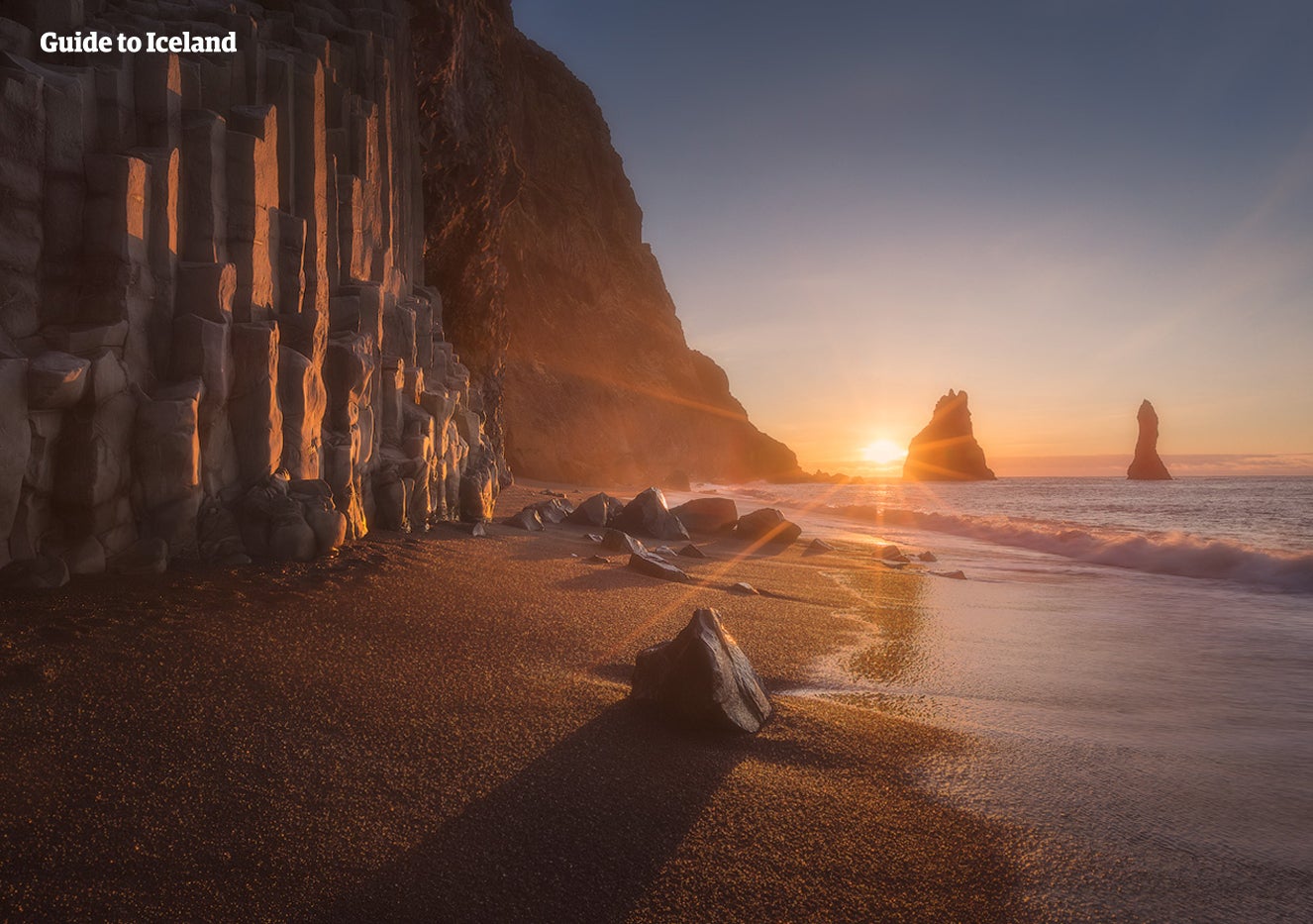
The Best Places to Visit in East Iceland

- Top 11 Attractions in East Iceland
- 11. Viti Crater Lake in Askja
- 10. Hallormsstadarskogur Forest
- 9. Lagarfljot Lake
- 8. Hengifoss Waterfall
- 7. Bulandstindur
- 6. Laugavellir Hot Natural Waterfall
- 5. Klifbrekkufossar Waterfalls
- 4. The Giant Boulders of Storurd
- 3. Vatnajokull National Park
- 2. Studlagil Canyon
- 1. Vestrahorn Mountain
- Top 5 Things to Do in East Iceland
- 5. See the Reindeer
- 4. Skriduklaustur Center of Culture and History
- 3. The Wilderness Center
- 2. Petra's Stone and Mineral Collection
- 1. The Vok Baths
- Top 5 Towns to Visit in East Iceland
- 5. Djupivogur
- 4. Faskrudsfjordur
- 3. Borgarfjordur Eystri
- 2. Seydisfjordur
- 1. Egilsstadir
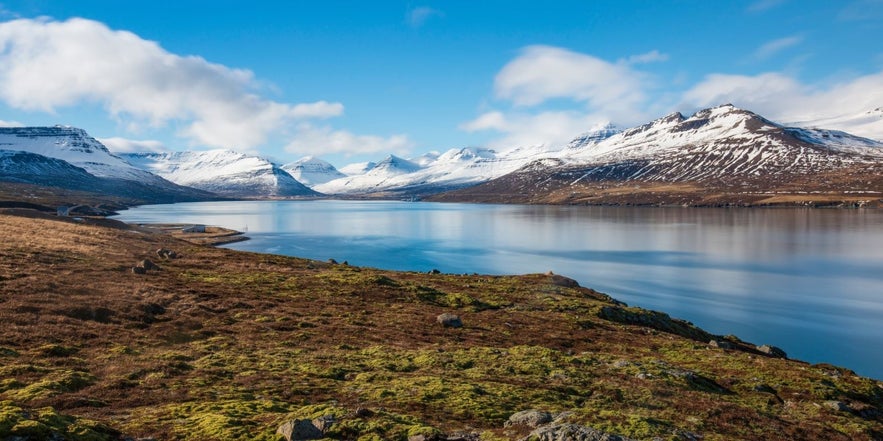
Stretching from Bakkafjordur in the north to around Hofn in the south, East Iceland is rich in culture, dramatic scenery, and intriguing history. Unlike the relative hustle and bustle of Reykjavik and the South Coast, those living in the East experience a pace of life one would consider a little less hectic. Covering an incredible expanse of 8.773 square miles (22,721 square kilometers), the region is only home to approximately 11,000 people, with Egilsstadir being the largest town.
The region has all of the features that make Iceland such a distinctive destination and is a popular stop on the many self-drive tours around the country. The stars of the East are the beautiful Eastfjords that are sprinkled with tiny fishing villages, and throughout the region, you can find sublime nature, with flowing waterfalls, black sand beaches, rugged mountainscapes, and creeping glaciers. The coastlines make for a picturesque drive, framed by an ever-changing landscape on one side and the rolling blue waves of the North Atlantic on the other.
If you're planning to sleep overnight in this beautiful region, browse our wide selection of hotels in East Iceland to find a great place to stay. You can take a public bus from Reykjavik to Egilsstadir and to other towns in East Iceland, but the area is best visited by rental car. This will allow you the freedom to explore. During the warmer months, you can go by a small rental car, but this will limit the attractions you can visit.
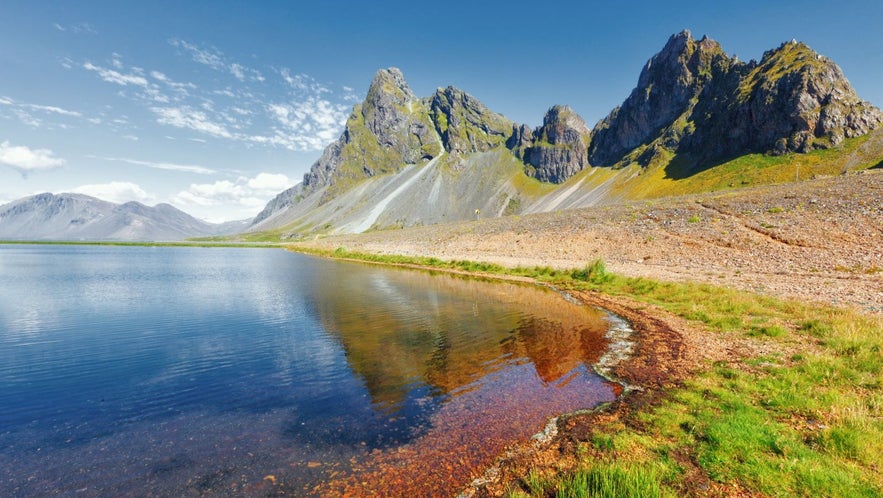 The drive from Reykjavik to Egilsstadir takes around 8 or 9 hours, depending on whether you go through North or South Iceland. You could also rent a campervan if you want a more freeing and affordable option.
The drive from Reykjavik to Egilsstadir takes around 8 or 9 hours, depending on whether you go through North or South Iceland. You could also rent a campervan if you want a more freeing and affordable option.
Given the distance from Reykjavik, it comes as little surprise that this is the region least frequented by international visitors. This does mean, however, that you're likely to have more tranquility during your journey, adding another incentive to visit. Read on to find out what places you should include on your East Iceland itinerary.
- Plan your trip with the Ultimate Guide to Iceland's Eastfjords
- Check out the Ultimate Guide to Driving in Iceland
- See more: Planning a Ring Road Trip in a Campervan
Top 11 Attractions in East Iceland
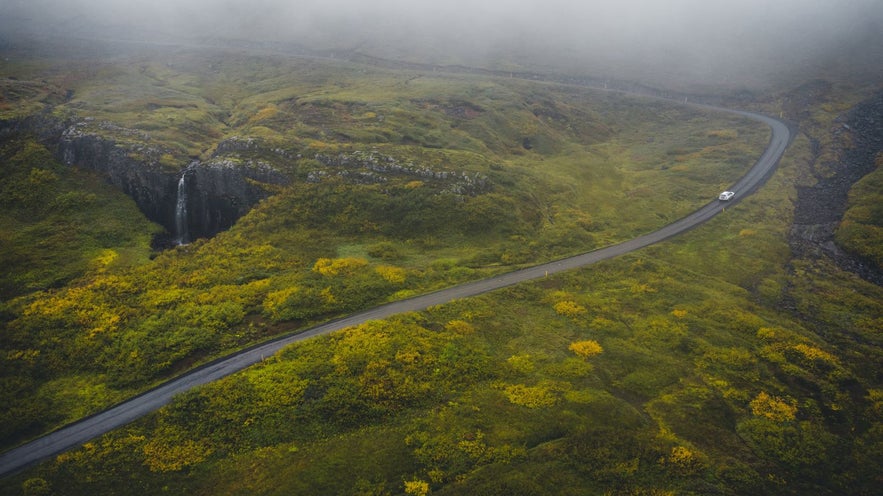 When traveling around the East of Iceland, you will find a plethora of natural wonders among the region's tranquil fjords. Here are the top 11 places to add to your Eastfjord itinerary.
When traveling around the East of Iceland, you will find a plethora of natural wonders among the region's tranquil fjords. Here are the top 11 places to add to your Eastfjord itinerary.
11. Viti Crater Lake in Askja
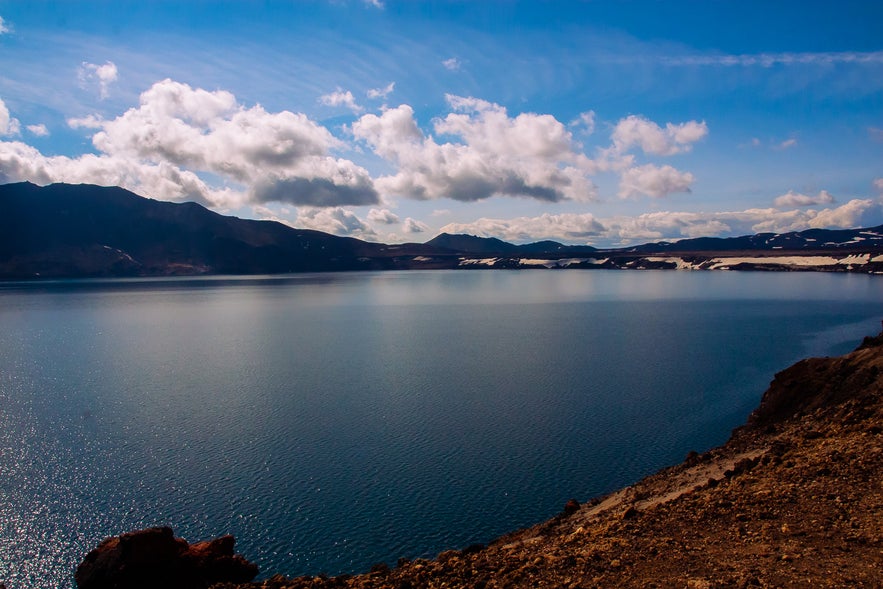
Viti Crater Lake can be found in the Askja caldera, a 19.3 square-mile (50 square kilometer) depression that formed at the end of the last glacial age when a chamber beneath the Dyngjufjoll mountains collapsed, thus causing a large, circular gap on the landscape.
Ever since, Askja Caldera has continued to fill with water, forming a 721.7 feet deep lake (220 meters) named Oskjuvatn, the second-deepest inland lake found in Iceland. This high-altitude lake is normally covered with a thick layer of ice, except during the height of summer.
In 2012, however, scientists discovered the lake to be largely ice-free, causing concern that geothermal activity in the area may be heating up, and thus, indicating an upcoming eruption.
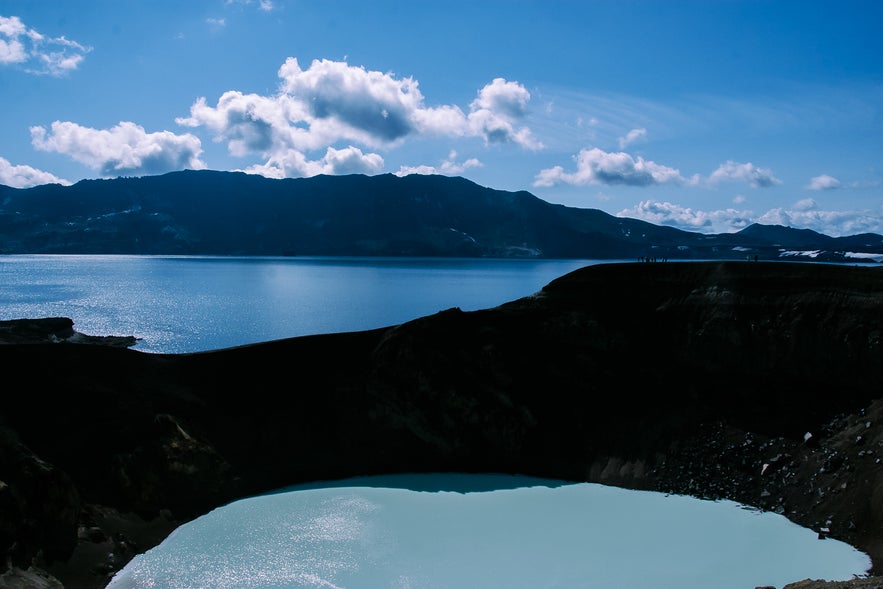 Viti, however, is much smaller and continually warm. To reach Viti, visitors must hike for up to an hour across the black sand dunes of Askja. You'll then be able to admire the gorgeous aquamarine color of the water itself, as well as the stunning views from the crater edge.
Viti, however, is much smaller and continually warm. To reach Viti, visitors must hike for up to an hour across the black sand dunes of Askja. You'll then be able to admire the gorgeous aquamarine color of the water itself, as well as the stunning views from the crater edge.
In the summer months, Viti is perfectly suitable for swimming, making for a unique and authentically Icelandic bathing spot; it is, after all, a crater from a volcanic explosion. If you want to include Viti by Askja in your itinerary, it's necessary to rent a 4x4 jeep as it's located in the Highlands with only gravel roads leading to it. If you prefer to skip the drive, you can also join this super jeep tour to Askja caldera from Lake Myvatn.
10. Hallormsstadarskogur Forest
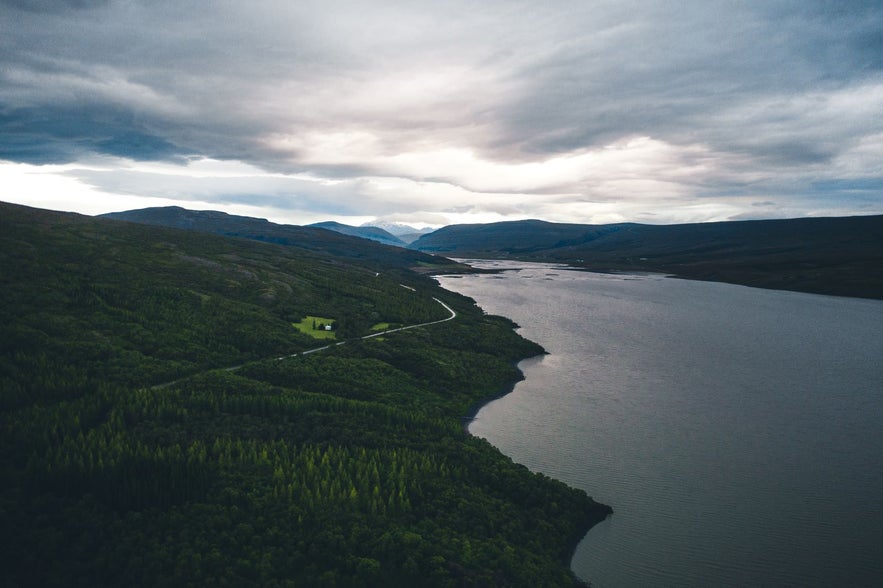 There’s an old joke in Iceland:
There’s an old joke in Iceland:
How do you find your way out of an Icelandic forest?
...
Just stand up!
Culturally, the joke makes sense because Iceland has long been deforested, in part due to the country’s settlement period, when timber was overused. It is thought that Iceland was devoid of forest cover within a century of the arrival of the first settlers and that the subsequent soil erosion that has occurred over time has only worsened the problem.
Today, it's commonly said that there are no trees in Iceland, but it's not completely true. Since the mid-20th century, Iceland has embarked on ambitious reforestation efforts with a strong emphasis on sustainable practices.
This is partly what makes the Hallormsstadaskogur National Forest a must-visit location when traveling around East Iceland. It's Iceland’s largest forest, located just a 15-minute drive away from the town of Egilsstadir.
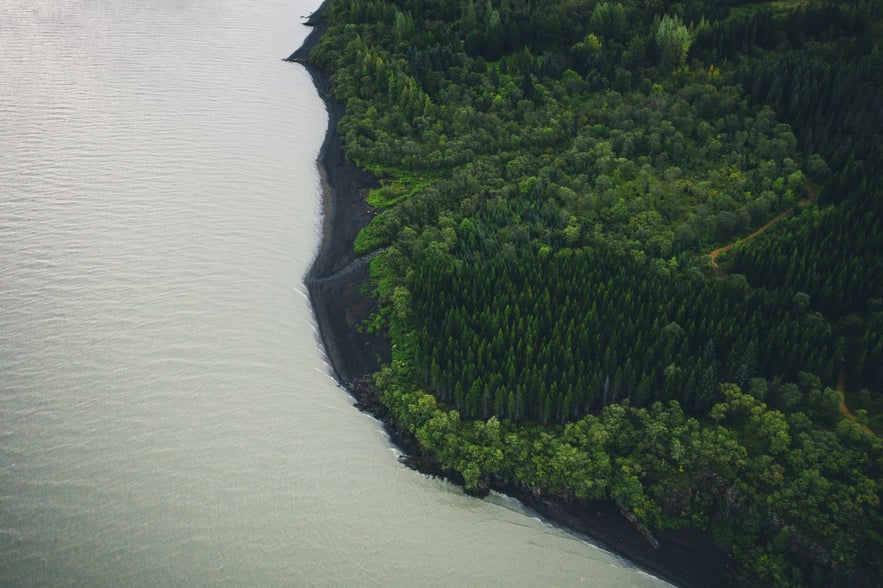 In 1905, Hallormsstadarskogur was granted governmental protection and thus was Iceland’s first “official” forested area. Today, over 85 different species of tree can be found in the forest, covering 1829 acres (740 hectares).
In 1905, Hallormsstadarskogur was granted governmental protection and thus was Iceland’s first “official” forested area. Today, over 85 different species of tree can be found in the forest, covering 1829 acres (740 hectares).
Hallormsstadaskogur is a saving grace of Iceland’s birdlife, providing food, shelter, and nesting for a wealth of species. During summer, you may see redwings, Eurasian woodcocks, snipes, and meadow pipits. Yearlong residents include ravens, common redpolls, wrens, and goldcrests, amongst others.
There are many walking and hiking paths through the forest, as well as cycling paths, a campground, and a frisbee golf course. The forest can also make for the perfect stop for a picnic break during your travels.
- Learn more about Birds in Iceland
- See also: The Forests of Iceland | Foresting a Treeless Land
- Find out more about Hallormsstadaskogur Forest in East-Iceland
9. Lagarfljot Lake
When visiting Hallormsstadarskogur forest, take the time to see Lagarfljot, a 20-square-mile lake (53 square-kilometer) also known as "Lögurinn." Popular amongst guests to the region, the 87-mile-long (140 km) Lagarfljot river runs directly through the lake, which measures 1.5 miles (2.5 km) at its widest.
Icelandic folklore dictates that Lagarfljot is home to a cryptid, serpent-like creature known as Lagarfljotsormurinn, which translates to "the Lagarfljot Wyrm." This lake monster is thought to live at the depths of the lake, making an appearance every few decades or so, thus signifying ill-fate for the local population.
There are recurring mentions of the monster throughout history. One of the first sightings was in the 14th century when the monster is said to have breached the water, rising so high that a ship with full sails could have passed under it. In the 17th century alone, over fourteen sightings were reported by local travelers.
Most recently, the above video was recorded in 2012 that claims to show the Lagarfljot Wyrm swimming on the surface of the lake. The footage was shot by a local from Hrafnkelsstadir farm in Fljotsdalur valley, and soon made international headlines, as well as racking up over 5 million views on YouTube.
- See also: Folklore in Iceland
- Learn more: Lakes in Iceland
8. Hengifoss Waterfall
 Photo by Regína Hrönn Ragnarsdóttir
Photo by Regína Hrönn Ragnarsdóttir
Measuring 500 feet high (128 meters), Hengifoss is Iceland’s third-highest waterfall, most famous for the black and red basalt rock wall that sits behind the falling water. The distinctive red color on the rock wall comes from clay that has formed between the basaltic strata. These layers are called "Paleosols" in soil science and have no chemical relationship to modern vegetation.
The car park to Hengifoss can be located at the beginning of a 1.5-mile hike (2.5 kilometers), so make sure to bring with you a pair of sturdy walking boots and some warm clothing, depending on what time of year you’ll be traveling. The hike is uphill and takes roughly an hour or so, so make sure to plan enough time for it so you don't have to stress.
The waterfall can be found in the municipality of Fljotsdalshreppur on the Hengifossa river, right next to Lake Lagarfljot.
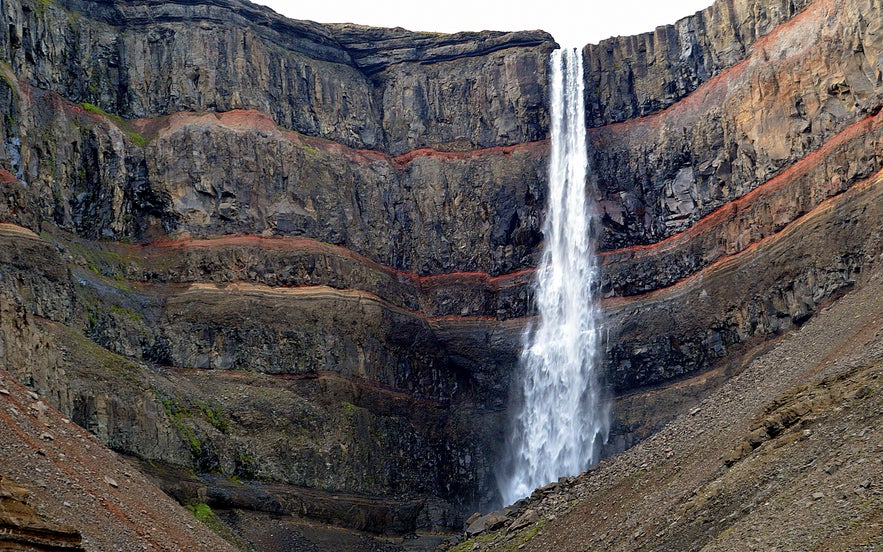
In a story from The Folklore Collection of Jón Árnason, first published in 1862-1864, it's mentioned that elves once inhabited the gorge around Hengifoss, known as Hengifossargil. The story is set on New Year’s Day and follows two men as they travel through the gorge.
From an unseen location, the two men heard a hymn as if it was being sung from the rocks themselves. At the end of the hymn, the two men heard a mysterious bell chime and quickly went on their way so as to not disturb the region’s hidden folk.
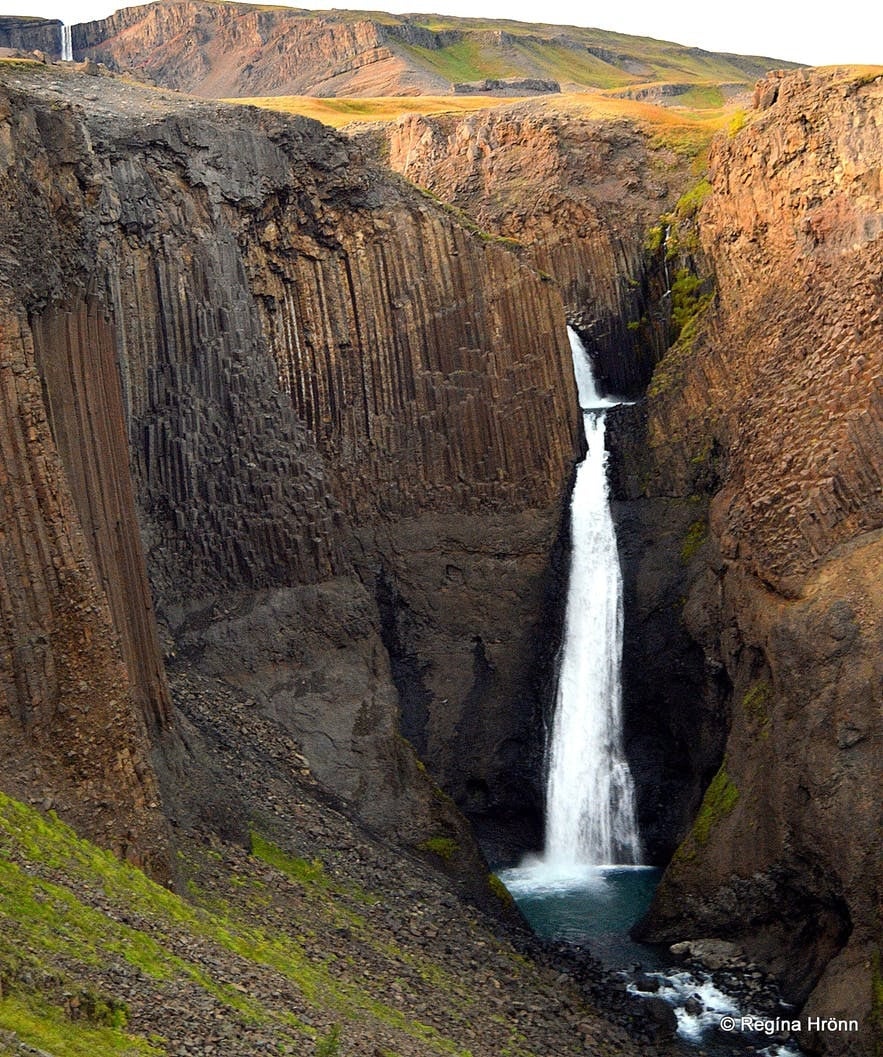
Photo by Regína Hrönn Ragnarsdóttir
Further down the river flowing from Hengifoss is another waterfall, the 114.8 feet high (35 meters) Litlanesfoss, also known as Studlabergsfoss. This waterfall is particularly notable for the hexagonal basalt columns that surround the falls. Nature enthusiasts can easily see both of these beautiful waterfalls during their hike along the Hengifossa river.
7. Bulandstindur
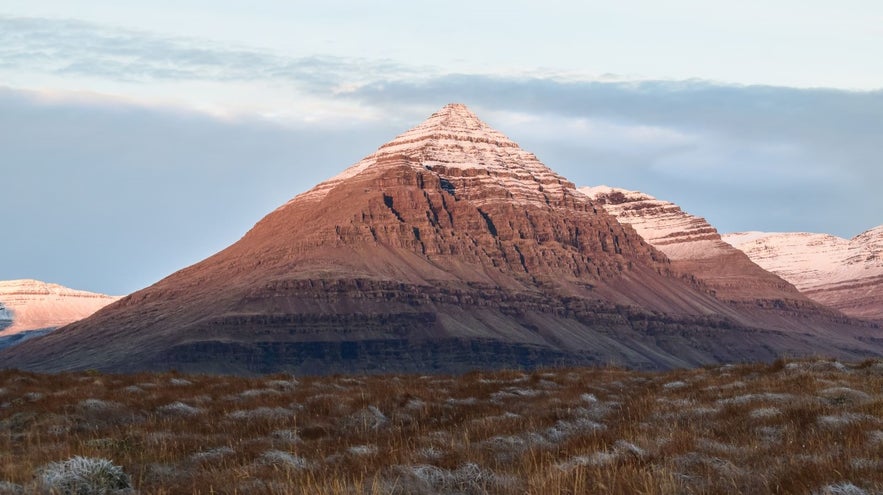
The pyramid-shaped Bulandstindur is considered by many to be one of the more beautiful mountains in Iceland. The mountain’s distinctive shape comes from the visible layers of basaltic strata, formed and sculpted over 8 million years to create one of the country’s most dramatic features.
Bulandstindur is rich with folklore, with stories centered around a cliffside called Godaborg, a name that alludes to an event that supposedly took place shortly after the Christianisation of Iceland in 1000 AD. It is said that together some of Iceland's chieftains, known as "Goðar" in Icelandic, climbed the mountain’s steep slopes, throwing their pagan idols from it in a demonstration of servitude to their new deity.
A similar event is said to have taken place at the waterfall, Godafoss, in North Iceland, when the law speaker Þorgeir Ljósvetningagoði threw his own idols into the tumultuous water.
Another folktale states that the Godaborg cliffside had a body of water where the innards of animals were washed after they had been sacrificed to the pagan gods for peace. Others believe the mountain to be a source of energy, inspiring mystics, poets, and artists.
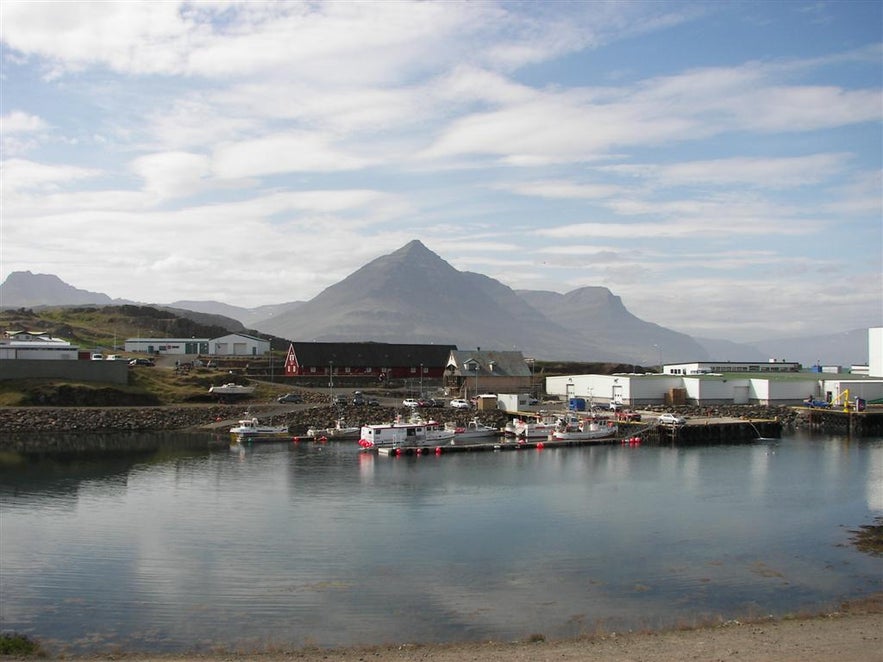 Photo from Wikimedia, Creative Commons, by Olafurbj. No edits made.
Photo from Wikimedia, Creative Commons, by Olafurbj. No edits made.
Those looking to hike Bulandstindur are in luck; there are a number of walking trails of varying difficulty that all lead to the top of the mountain. The views from the peak are truly out of this world, spanning over the fjords of Berufjordur, Hamarsfjörður, and Alftafjordur. Bulandstindur peaks at 3507 feet (1069 meters) and is especially beautiful to see during the sunrise.
- See more about Mountains in Iceland
6. Laugavellir Hot Natural Waterfall
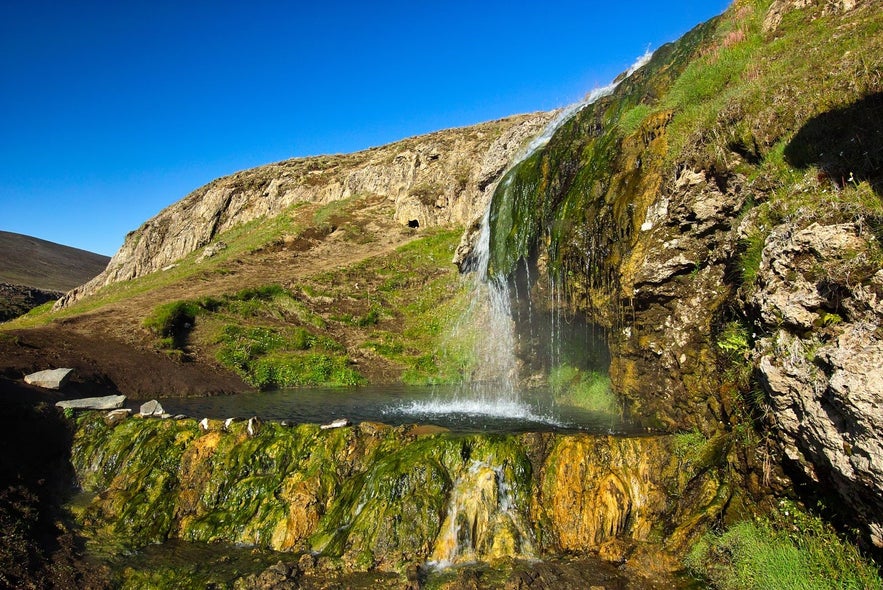 Laugavallalaug is a remote geothermal hot spring and waterfall found in the northeast region of the Highlands of Iceland. The pool's heat generally measures out between 102-105°F (39-41°C), perfect for a nice long soak, but the temperature will fluctuate with the weather.
Laugavallalaug is a remote geothermal hot spring and waterfall found in the northeast region of the Highlands of Iceland. The pool's heat generally measures out between 102-105°F (39-41°C), perfect for a nice long soak, but the temperature will fluctuate with the weather.
If the air is chill and it's very windy, the water may be a bit too cold for bathing. It's always recommended that you first check the temperature with a fingertip before jumping in.
The geothermal pool is situated at an altitude of almost half a mile (600 meters) inside the central highlands; its relatively high location is the reason for the lush blanket of vegetation that surrounds the pool, ensuring it's one of the more authentic and naturally exquisite stops of your tour around East Iceland.
Despite the region's surprising fertility, the soil has been difficult to cultivate throughout history. One can still find two abandoned buildings in the valley, relics of an old farmstead that proved so difficult to operate the original owners took their lives.
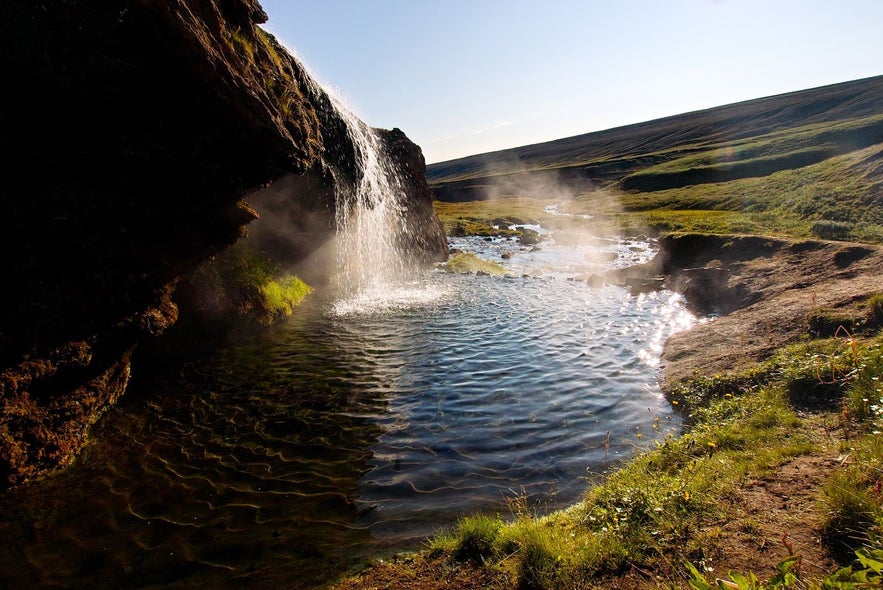 Laugavellir is still rather hard to access, which is a blessing in disguise as it can not handle much traffic. The area is only accessible during the height of summer, with the possibility of snow blocking the path between September and even early June.
Laugavellir is still rather hard to access, which is a blessing in disguise as it can not handle much traffic. The area is only accessible during the height of summer, with the possibility of snow blocking the path between September and even early June.
If you're up for a bit of a challenge, the most effective way to get to Laugavellir is by using a 4x4 vehicle to navigate the tricky gravel roads. There is a designated parking area located close to the waterfall where you can safely leave your car. From there, it's just a short walk to your destination.
If you don't have a four-wheel drive, you can still reach the waterfall, but you will need to do a 4-mile hike one way to reach it (6.4 kilometers). This can be its own special adventure, so bring good hiking boots, warm clothing, and snacks with you before taking a dip in nature.
5. Klifbrekkufossar Waterfalls
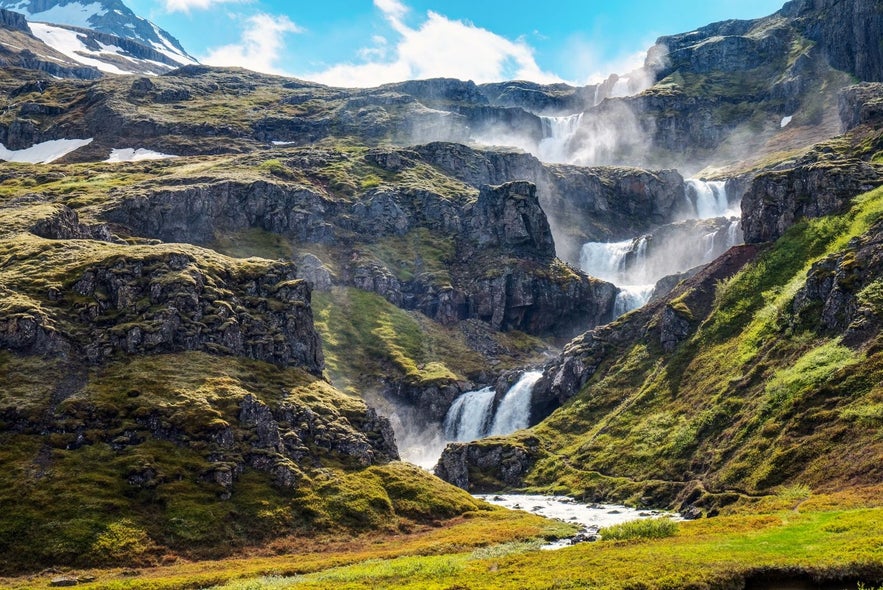 Klifbrekkufossar is a cascading series of seven waterfalls in East Iceland. A gorgeous sight to behold, the falls have a combined drop of 296 feet (about 90 meters) down a series of terraced levels of rock formation. It's located in the Mjoifjordur fjord, arguably the most remote place in Iceland.
Klifbrekkufossar is a cascading series of seven waterfalls in East Iceland. A gorgeous sight to behold, the falls have a combined drop of 296 feet (about 90 meters) down a series of terraced levels of rock formation. It's located in the Mjoifjordur fjord, arguably the most remote place in Iceland.
In the early 20th century, Mjoifjordur hosted one of the largest whaling operations in the world, employing over 200 people in the village of Brekkuthorp. Today, it has a year-round population of 14 people.
Mjoifjordur is only accessible by car for around 4 months of the year, and to get there, you follow the Ring Road and then take Road 953 all the way to the fjord. Outside of summer, the fjord is only accessible by ferry from the town of Neskaupstadur.
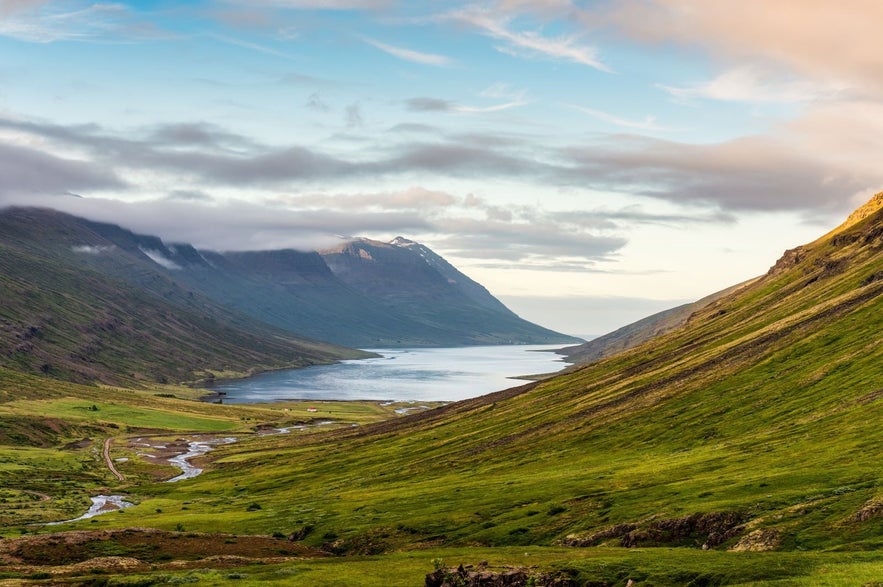 Mjoifjordur is a great place for tranquil hiking and exploring, and Klifbrekkufossar is one of the main highlights to see. It's beautiful from a distance when you can appreciate the whole vision of the waterfalls, and you can also hike to the top. From there, you'll be rewarded with panoramic views of Mjoifjordur, a sight that truly encapsulates the wild, unspoiled beauty of East Iceland.
Mjoifjordur is a great place for tranquil hiking and exploring, and Klifbrekkufossar is one of the main highlights to see. It's beautiful from a distance when you can appreciate the whole vision of the waterfalls, and you can also hike to the top. From there, you'll be rewarded with panoramic views of Mjoifjordur, a sight that truly encapsulates the wild, unspoiled beauty of East Iceland.
Visiting Klifbrekkufossar is an adventure where you'll be surrounded by natural beauty and the tranquil solitude of a remote location. The serenity of the falls and the surrounding landscapes make it a perfect destination for those seeking an immersive encounter with nature.
4. The Giant Boulders of Storurd
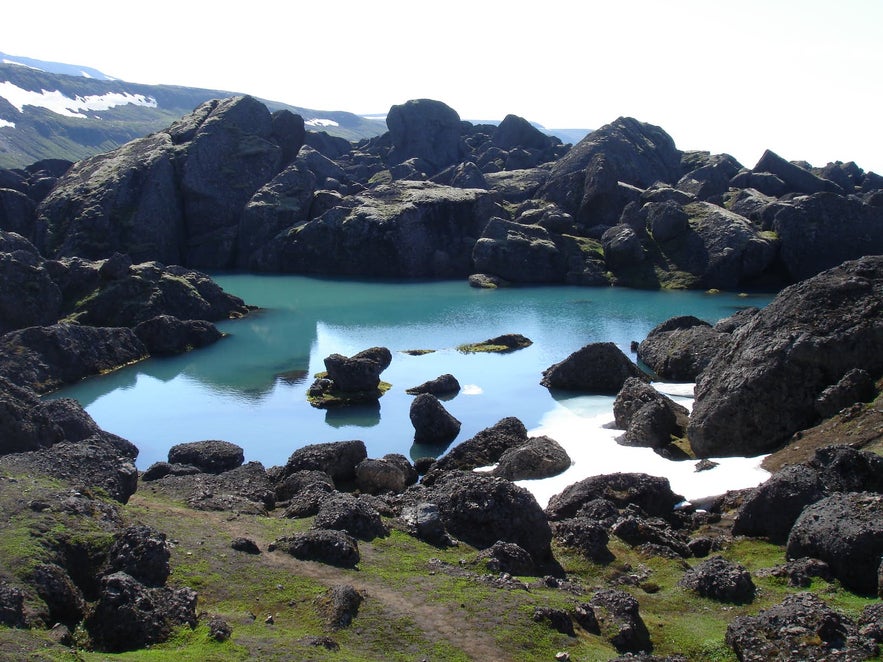 Photo from Fascinating 9-Hour Hiking Tour to the Storurd Boulders with Transfer from Egilsstadir
Photo from Fascinating 9-Hour Hiking Tour to the Storurd Boulders with Transfer from Egilsstadir
At the base of one of Iceland's most beautiful mountains, Dyrfjoll ("Door Mountains"), one can find the charming sightseeing stop, Storurd ("The Giant Boulders.")
Sitting dispersed within and around glittering green ponds, enormous natural rock sculptures decorate the scene, culminating in a beautiful hiking environment. With its unearthly terrain and unique ambiance, Storurd has numerous hiking trails to keep visitors from getting lost and confused.
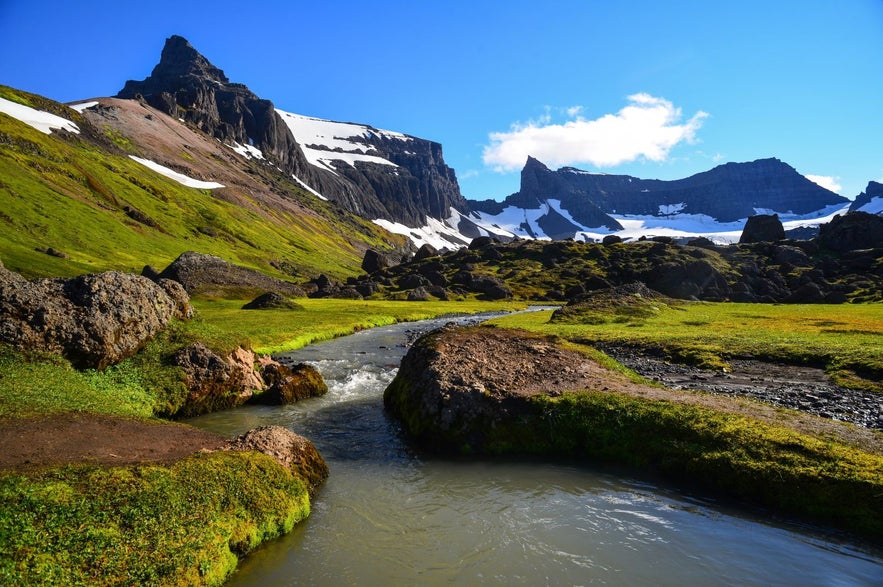 The Dyrfjoll mountains peak at an incredible 3727 feet (1136 meters) and are part of a larger mountain range. The mountains are believed to have formed when an explosive volcanic eruption took place underwater 11-12 million years ago, and a glacier carved out the large and overt notch at its peak. The Storurd boulder area was then likely created in a landslide at the end of the last Ice Age.
The Dyrfjoll mountains peak at an incredible 3727 feet (1136 meters) and are part of a larger mountain range. The mountains are believed to have formed when an explosive volcanic eruption took place underwater 11-12 million years ago, and a glacier carved out the large and overt notch at its peak. The Storurd boulder area was then likely created in a landslide at the end of the last Ice Age.
The Dyrfjoll mountains and Storurd are iconic attractions in East Iceland that deserve a place on any Iceland itinerary. You can join a hiking tour to the Storurd boulders with a transfer from Egilsstadir or embark on the hike by yourself. Make sure to send in a travel plan at SafeTravel beforehand to help rescue services locate you in case of an emergency.
You can also see the mountains from a distance with a stop in the fjord of Borgarfjordur Eystri or by the charming solar-powered vending machine along Road 701, which is a good place for a short stop.
3. Vatnajokull National Park
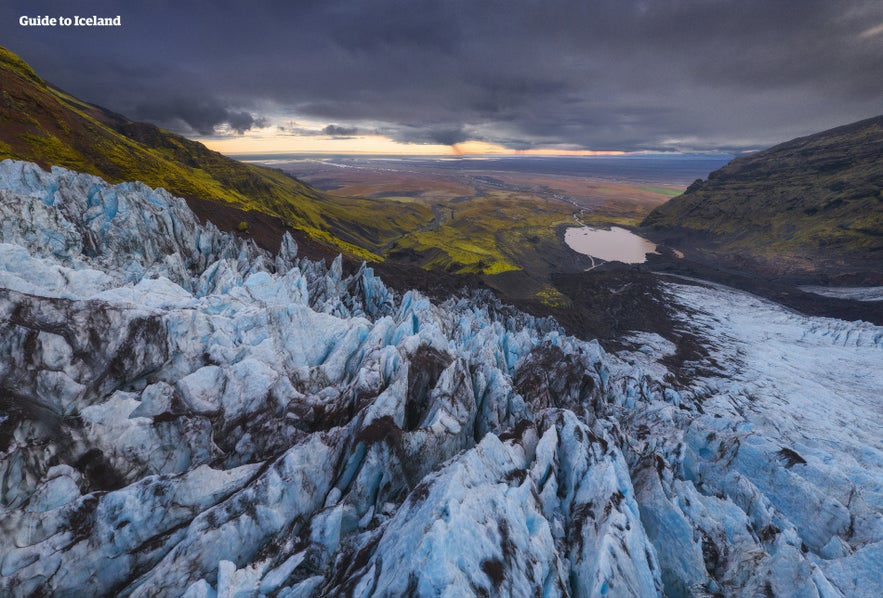 Vatnajokull National Park covers 14% of Iceland, making it a difficult stop to miss whilst traveling through the country. The park was officially formed in 2008, merging the smaller Skaftafell and Jokulsargljufur National Parks with the Vatnajokull glacier, thus creating one expansive area of protected wilderness.
Vatnajokull National Park covers 14% of Iceland, making it a difficult stop to miss whilst traveling through the country. The park was officially formed in 2008, merging the smaller Skaftafell and Jokulsargljufur National Parks with the Vatnajokull glacier, thus creating one expansive area of protected wilderness.
Over three times the size of Luxembourg, the 3127 square mile glacier (8,100 square kilometers), Vatnajokull, is the largest icecap found in Europe. Beneath the ice is a world of cragged valleys, subterranean lakes and crevasses, and even mountain peaks, including Iceland’s highest mountain, Hvannadalshnukur, which experienced hikers may be tempted to conquer with this guided hiking tour.
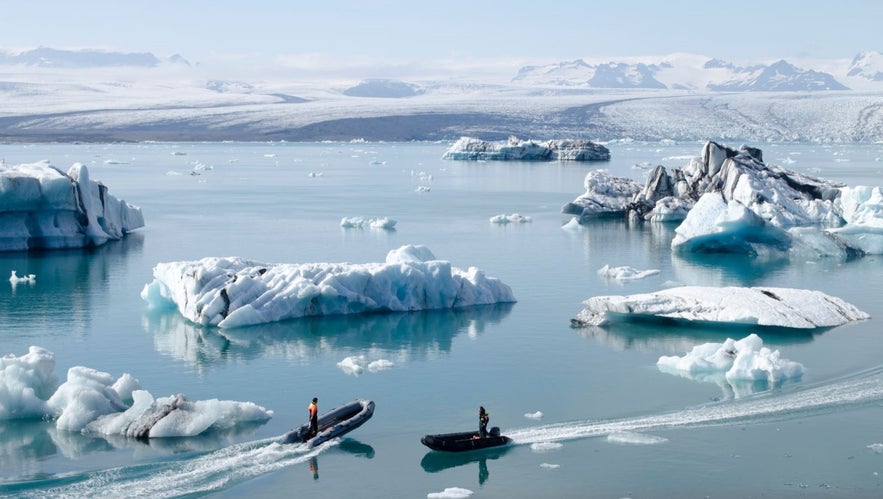 From the ice cap itself protrude over thirty outlet glaciers, many of which are observable from the Ring Road. One of these observable outlets is Breidamerkurjokull, famous for its breaking point at Jokulsarlon Glacial Lagoon. Another is Skaftafellsjokull, where visitors can stay at a nearby campsite and enjoy fantastic views of the surrounding area or embark on a glacier hiking tour on Vatnajokull.
From the ice cap itself protrude over thirty outlet glaciers, many of which are observable from the Ring Road. One of these observable outlets is Breidamerkurjokull, famous for its breaking point at Jokulsarlon Glacial Lagoon. Another is Skaftafellsjokull, where visitors can stay at a nearby campsite and enjoy fantastic views of the surrounding area or embark on a glacier hiking tour on Vatnajokull.
In the northeast of Vatnajokull National Park, you can find more natural wonders, like Dettifoss, the most powerful waterfall in Iceland, the stunning Asbyrgi canyon, and the geothermal area of Mt. Namafjall, all of which are also part of the Diamond Circle route.
- See also: National Parks in Iceland
2. Studlagil Canyon
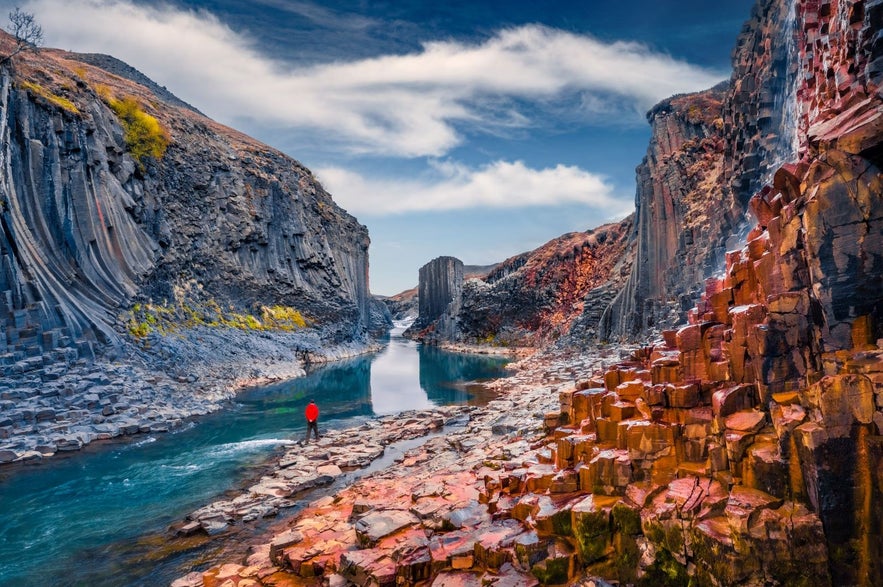 Nestled in the rugged landscapes of the Jokuldalur glacier valley in East Iceland, Studlagil canyon is a geographical gem, begging for exploration. It features magnificent basalt columns that contrast the vibrant blue waters of the Jokulsa River, creating an ethereal atmosphere.
Nestled in the rugged landscapes of the Jokuldalur glacier valley in East Iceland, Studlagil canyon is a geographical gem, begging for exploration. It features magnificent basalt columns that contrast the vibrant blue waters of the Jokulsa River, creating an ethereal atmosphere.
When visiting Studlagil canyon you'll be able to see the interplay of volcanic activity and glacial erosion. The columns, a result of an ancient lava flow cooling and contracting into polygonal shapes, showcase Iceland's volcanic past. Meanwhile, the canyon itself owes its existence to the receding glacier that once covered the river.
The canyon is also a tranquil spot for photography. The dramatic changes in the canyon's appearance under different light conditions can be particularly captivating for avid photographers.
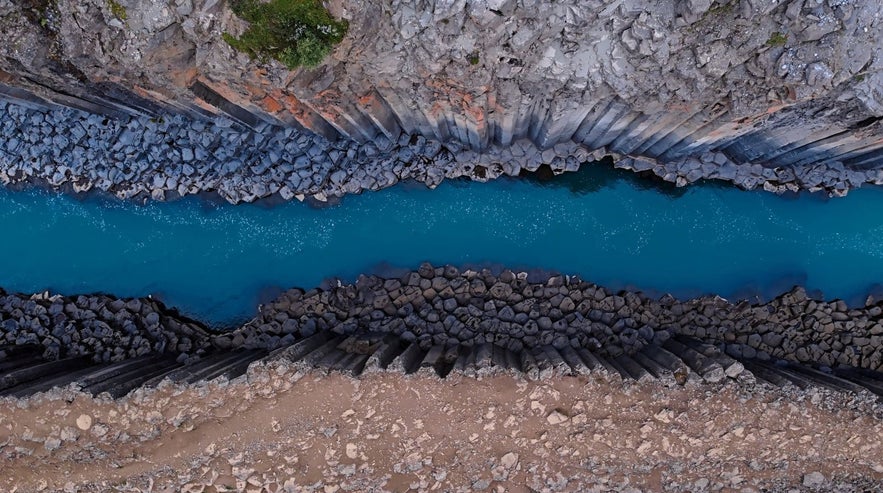 Studlagil canyon is best reached by following the Ring Road from the town of Egilsstadir and then heading down Road 923. From there, go down Jokuldalsvegur road, and soon you'll find a parking lot for the canyon. There are hiking paths along the canyon that we recommend exploring, especially as you'll be able to see the beautiful Studlafoss waterfall in the area.
Studlagil canyon is best reached by following the Ring Road from the town of Egilsstadir and then heading down Road 923. From there, go down Jokuldalsvegur road, and soon you'll find a parking lot for the canyon. There are hiking paths along the canyon that we recommend exploring, especially as you'll be able to see the beautiful Studlafoss waterfall in the area.
This path is best done in summer and preferably with a 4x4 jeep, but you can also take a private sightseeing tour to the Studlagil canyon from Egilsstadir. For optimal adventure, you can add to the experience by enjoying a visit to the Vok Baths with a guided Studlagil canyon tour. No matter which way you choose to visit, the Studlagil canyon is a must-see for any nature lover exploring East Iceland.
1. Vestrahorn Mountain
The picturesque mountain of Vestrahorn can be found along the dark and majestic coastline of the Stokksnes peninsula. It's 1450 feet high (454 meters) and is considered to be between 8-10 million years old. It is one of Iceland's few gabbro mountains, meaning its origins lie in the hot magma trapped beneath the earth, which slowly cools over time to form a holocrystalline mass.
There's another gabbro mountain just a 40-minute drive further east called Krossnesfjall but is usually referred to as Eystrahorn, and it is also worth a stop on your journey.
Both nature and photography enthusiasts will find Vestrahorn a place of dream-like surrealism; from its rugged, sharp peaks to the surrounding blue ocean, the mountain's dramatic imagery will stick in your mind long after you leave.
The mountain is located 7.4 miles (12 kilometers) east of Hofn, a town known for being the "lobster capital of Iceland." There's even a yearly lobster festival in the town, usually occurring at the end of June, that celebrates this culture. It's definitely worth a lunch or dinner stop as part of your visit to Vestrahorn.
The rolling tundra of Vestrahorn makes for an excellent foreground in photography, especially considering how the landscape changes from season to season.
For those looking to explore this area, be aware that the beach is known for "sneaker waves," a type of wave that suddenly and unpredictably flows far higher up the tide than normal. This is a particular danger given the strong underlying currents and cold temperatures. This same type of wave also famously occurs at the Reynisfjara beach in South Iceland.
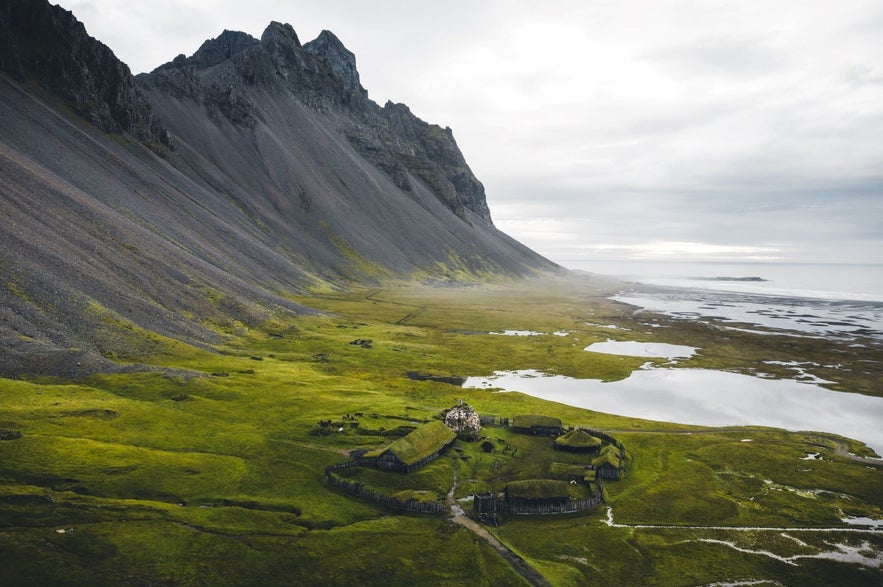 The area is also tied to early Icelandic history, as there are stories of Vestrahorn having first been settled by Irish monks who were later enslaved by the Norse, though so far, no archeological evidence has been found to prove this.
The area is also tied to early Icelandic history, as there are stories of Vestrahorn having first been settled by Irish monks who were later enslaved by the Norse, though so far, no archeological evidence has been found to prove this.
In the Icelandic Book of Settlements or "Landnámabók," it is also stated that one of the first settlements in the country was at the roots of Vestrahorn, the land having been claimed by Hrollaugur Rögnvaldsson, son of the Jarl of Møre in Norway.
Conveniently, there is a way to immerse yourself in this history (in a 21st-century way) by visiting the old Viking village film set at the root of Vestrahorn. There, you'll find a recreation of a small village that was supposed to be used by Universal Studios in 2010 but was abandoned for budgetary reasons. It has, however, featured in other film and TV-productions, including Netflix's The Witcher: Blood Origin.
- Learn more about the Extremely Dangerous Waves by Reynisfjara and Kirkjufjara Black Beaches
- See Also: Vikings and Norse Gods in Iceland
Top 5 Things to Do in East Iceland
5. See the Reindeer
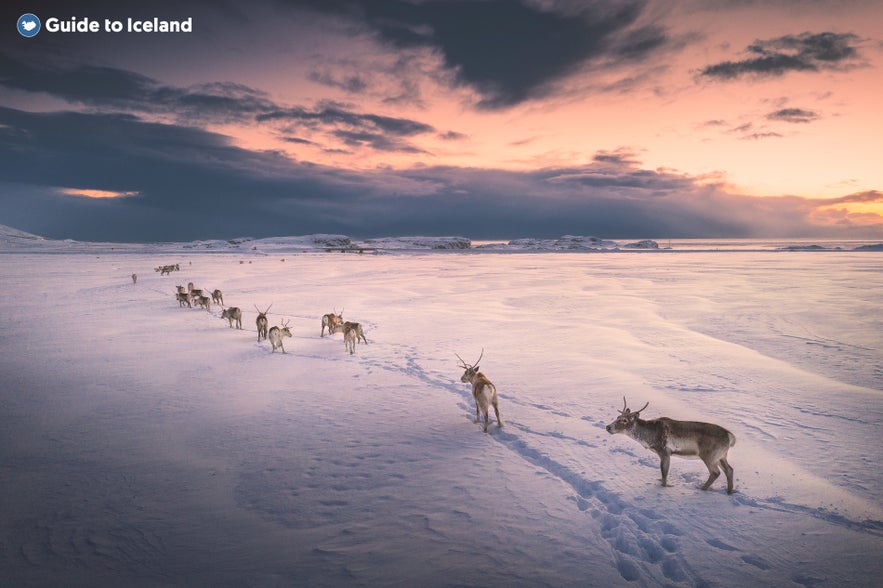
While you'll find natural wonders all over Iceland, there is one feature that makes the Eastfjords unique. It's the only area where one can see herds of reindeer roaming the Icelandic countryside.
Reindeer were first imported from Norway in the 18th century in a bid to provide the Icelandic people with fur, meat, clothing, and other resources. The Icelanders at that time, however, showed no particular interest in the reindeer, leaving them undomesticated and free to live wild across the country. Today, their population, estimated at around 4,000, is condensed to the east and controlled through seasonal hunting.
They can be harder to spot in summer, as they mostly roam around the Highlands north of Vatnajokull glacier. You'll have an easier time seeing them in autumn as they move closer to the lowlands in search of food. The best time to see them, however, is in winter, as they stay even closer to human habitation. With luck, you may even be able to see them from the Ring Road!
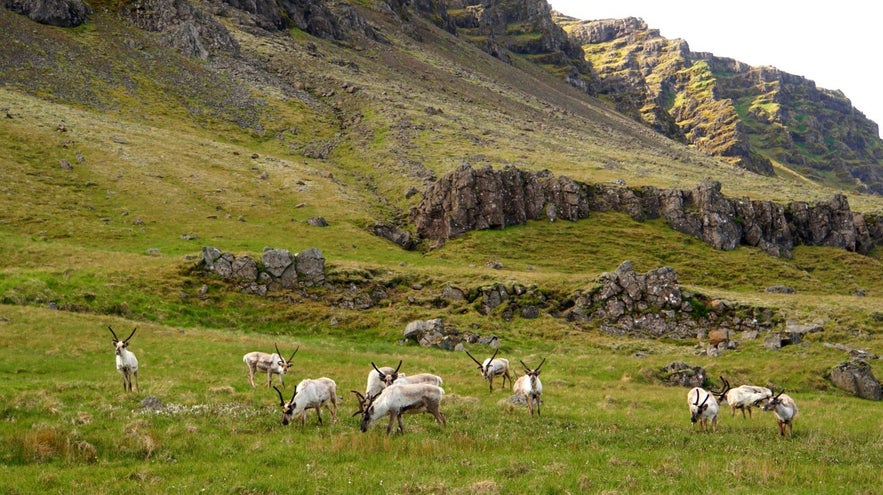 If you're visiting during some of the warmer months and don't want to miss out on seeing the Icelandic reindeer, there is a way to do so. If you're staying in accommodation in Breiddalsvik or Egilsstadir or just planning a visit, you can join a 4-hour reindeer safari with a super jeep. The tour operates between October and June and will ensure you can spot them in their natural habitat.
If you're visiting during some of the warmer months and don't want to miss out on seeing the Icelandic reindeer, there is a way to do so. If you're staying in accommodation in Breiddalsvik or Egilsstadir or just planning a visit, you can join a 4-hour reindeer safari with a super jeep. The tour operates between October and June and will ensure you can spot them in their natural habitat.
You may also be able to spot other animals on the way, like the mink, and the delightful Iceland native, the Arctic fox. The Eastfjords, in general, also offer some great locations for spotting puffins.
In order to have more likelihood of spotting these animals in the wild, it's best to rent an Icelandic cottage, situated far away from other houses and in amongst the spectacular nature. If you're visiting in winter, you may even be able to spot the northern lights as you'll be away from light pollution.
- See also: Wildlife and Animals in Iceland
4. Skriduklaustur Center of Culture and History
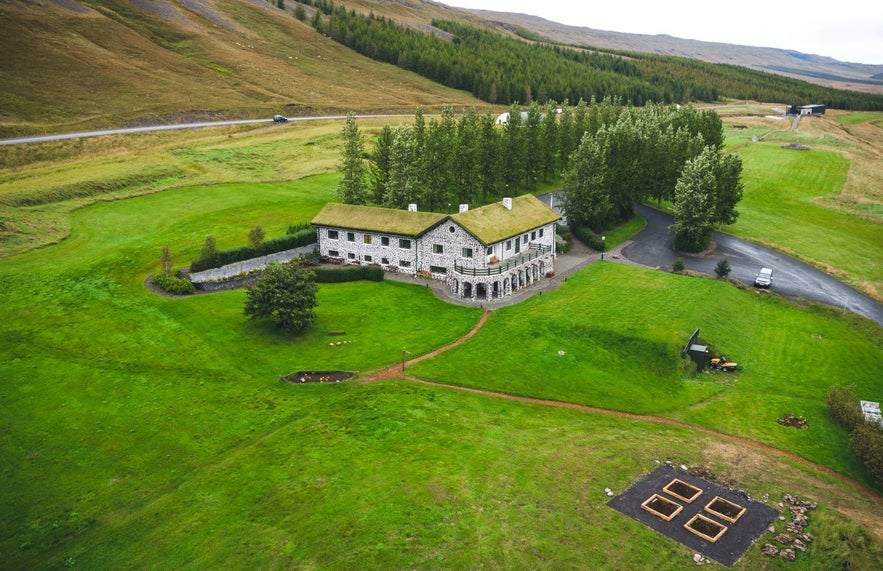 One of the must-visit places in East Iceland is the Skriduklaustur Center of Culture and History, a 35-minute drive from Egilsstadir. It's the location of the former home of writer Gunnar Gunnarsson (1889-1975), as well as a significant archeological site.
One of the must-visit places in East Iceland is the Skriduklaustur Center of Culture and History, a 35-minute drive from Egilsstadir. It's the location of the former home of writer Gunnar Gunnarsson (1889-1975), as well as a significant archeological site.
The mansion was designed by the German architect Johann Fritz Höger and built by Gunnar in 1939 after he had enjoyed a prosperous 30-year writing career in Denmark.
The building style is rather unique in Iceland and was an enormous project at the time, with over 100 people having worked on it. Gunnar had plans for more buildings in the area that were never started, and in 1948, he moved to Reykjavik and gave the mansion as a gift to the Icelandic people.
Today, Skriduklaustur hosts varied art and history exhibitions, both permanent and temporary, as well as many events throughout the year. Artists can also apply for a 3-6 week residency every year and draw inspiration from the unique surroundings. There's also an on-site restaurant that offers lunch and cake buffets.
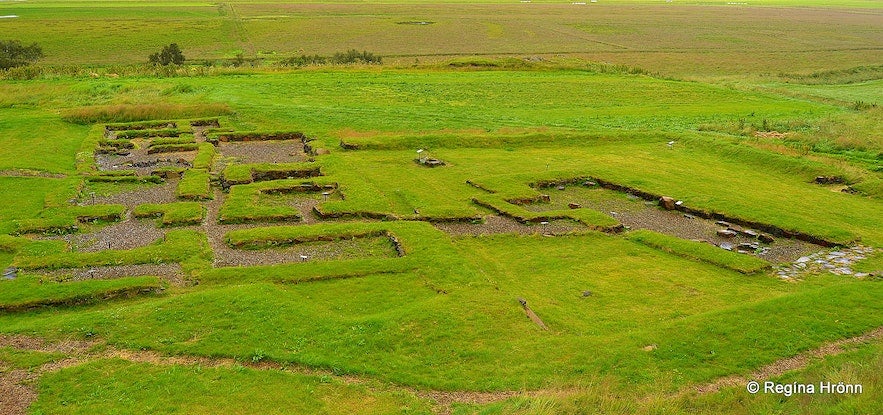
Photo from Regína Hrönn.
The major highlight of Skriduklaustur is the archeological site of an Augustinian monastery. It was founded in 1493 and mostly functioned as a hospital, but it wasn't in operation long as Iceland underwent a reformation in 1550 and became protestant.
The monastery was re-discovered in the year 2000 when archeologists were researching an old cemetery in the area. What followed was a 10-year research project where the site was excavated, and visitors can now explore the site.
What makes the visit especially worth it is that you can walk around the archeological site with a VR headset that lets you explore a 3D model of the buildings. It's a fantastic way to delve into this period of Icelandic history, which tends to get overlooked.
You can see a preview of the 3D model of the Skriduklaustur monastery in the video below.
- See more about Skriduklaustur and the Archaeological Excavations in East Iceland
- See also: Viking Ruins and Burial Mounds I have visited on my Travels in Iceland
- Learn more: Icelandic Literature for Beginners
3. The Wilderness Center
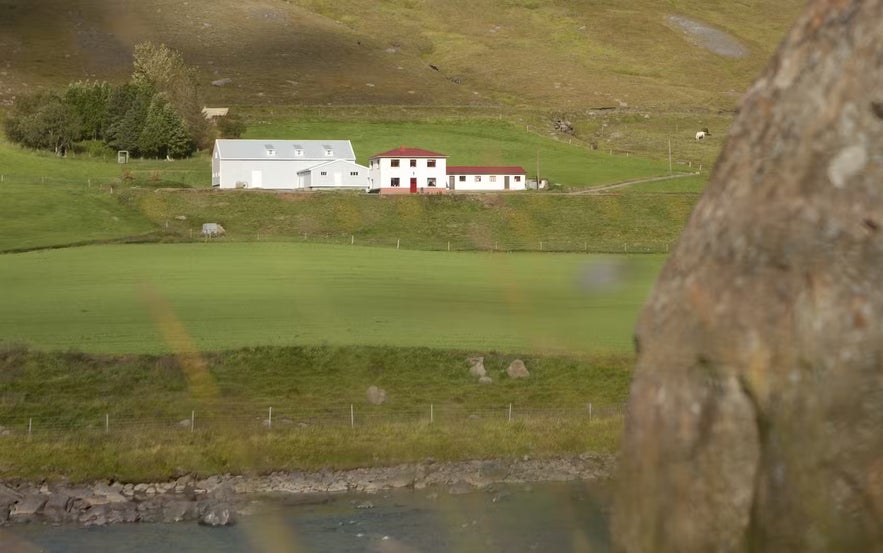
Photo from the Wilderness Center of Iceland
If you want an intimate experience with the remote and beautiful nature of East Iceland, there's no better place for it than the Wilderness Center. Located on the edge of the Highlands in a renovated farmhouse, it offers a getaway to the past that's about an hour's drive away from Egilsstadir.
While there, you can explore the surrounding nature by hiking. During guided hiking tours, you can even try your hand at winching yourself over the Jokulsa glacial river with a traditional cableway!
You can also go on horseback, like with this horse-riding wilderness tour on Icelandic horses. Alternatively, they offer mountain bikes for rent, or you can request a super jeep tour.
During your stay, make sure to take a dip in their heated pool and enjoy their sauna and relaxation room. It's the perfect end to a day of exploring.
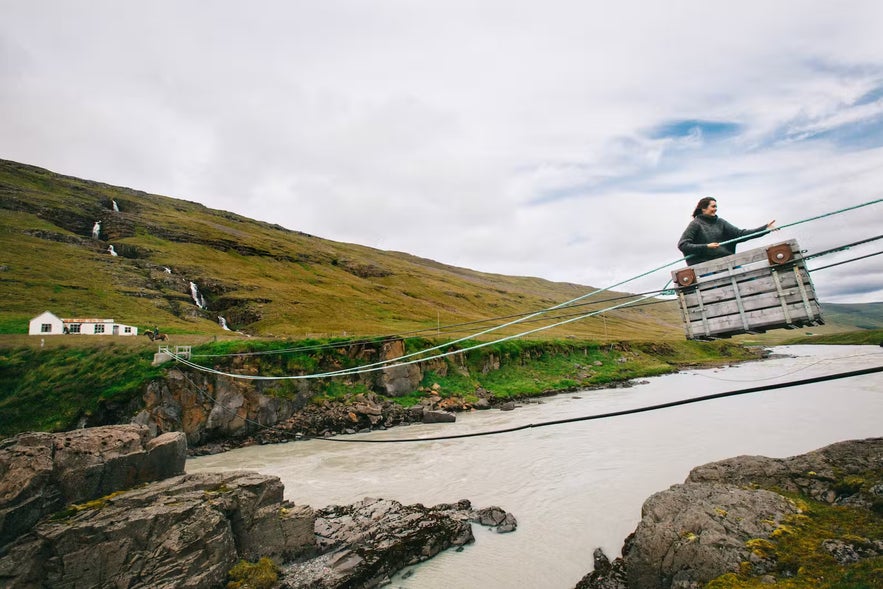
Photo from an Authentic 2 Day Winter Tour of Icelandic Culture & Nature with Transfer from Egilsstadir.
Check out their historical exhibition, which covers the lives of the past inhabitants of the land and their fight with the surrounding nature. It will make your exploration of the area, and of Icelandic nature in general, more insightful and enjoyable.
You can include a short visit to the center in your itinerary for East Iceland or make it a larger part of your trip by staying at one of the Wilderness Center's unique accommodation options. They offer shared and private rooms styled like historical houses, including Icelandic turf houses, where you'll feel like you've traveled through time.
Following the historical theme, they offer classic Icelandic home-style food made from local ingredients, with one main dinner option that changes daily. You can request your food to be vegetarian or vegan as well.
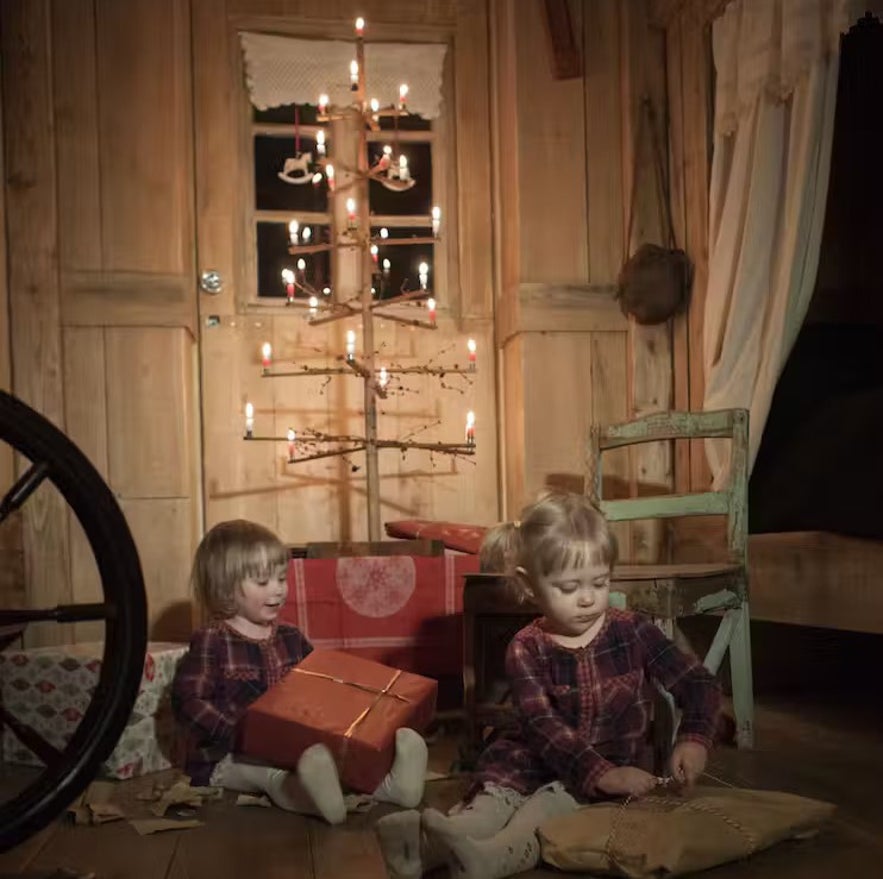
Photo from a Charming Christmas | 2 Day Yuletide Adventure in the Highlands.
If you happen to be visiting Iceland during the colder months, you're in for a special treat. You can experience the Wilderness Center's two-day yuletide adventure, where you'll be able to try Icelandic Christmas cuisine, learn about the local customs and folklore, and be able to participate in traditional festivities. You might even spot the northern lights in the winter darkness!
- Learn more: The Enchantment of Obyggdasetrid, the Wilderness Center
- Find out more about Icelandic Christmas Traditions and the Icelandic Yule Lads and Gryla
2. Petra's Stone and Mineral Collection
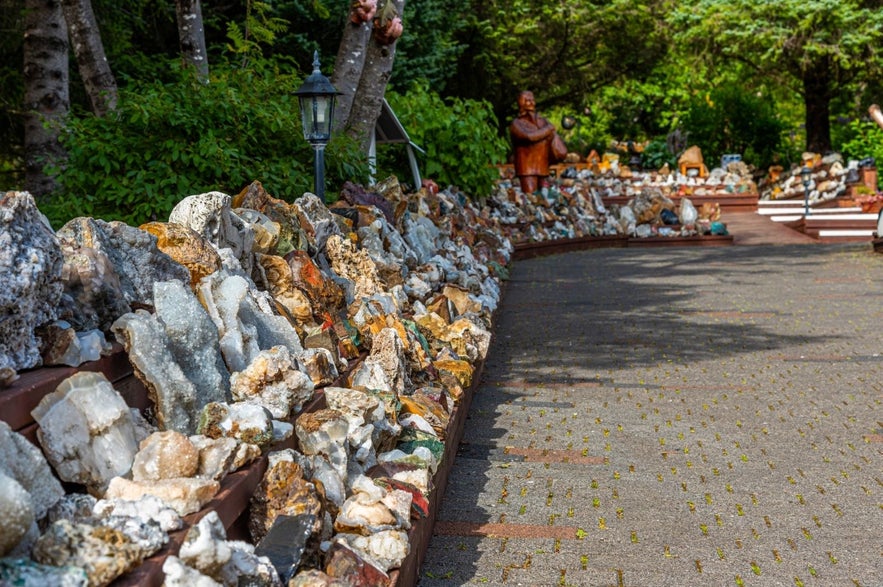 Ljósbjörg Petra María Sveinsdóttir was born on December 24th, 1922, in the village of Stodvarfjordur. Throughout her childhood, Petra nurtured a fascination with the natural world that would come to define her adult life and bring about one of the most beautiful yet strangest attractions in Iceland; Petra's Stone and Mineral Collection.
Ljósbjörg Petra María Sveinsdóttir was born on December 24th, 1922, in the village of Stodvarfjordur. Throughout her childhood, Petra nurtured a fascination with the natural world that would come to define her adult life and bring about one of the most beautiful yet strangest attractions in Iceland; Petra's Stone and Mineral Collection.
Given that “Petra” means ‘Stone’ in Greek, one might say it was destiny that Petra would dedicate her life to collecting, studying, and surrounding herself with a variety of rocks and minerals. Taking long walks at the beach, Petra’s devotion to seeking out the most exquisite geological samples quickly meant that there was no longer room in her house to store them.
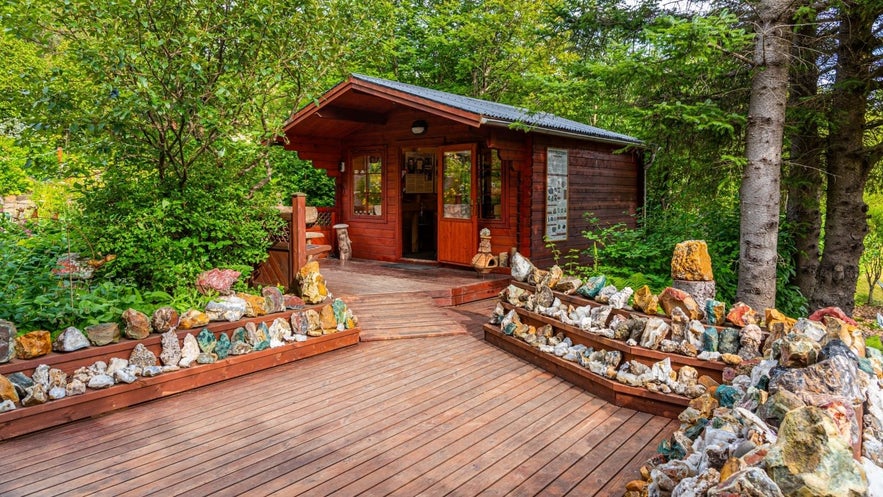 In the 1950s, Petra began to decorate her garden with stones, quickly attracting the attention of passing travelers who readily asked if they could take a look. Thus, Petra’s private home began to take on a new life as a natural history museum.
In the 1950s, Petra began to decorate her garden with stones, quickly attracting the attention of passing travelers who readily asked if they could take a look. Thus, Petra’s private home began to take on a new life as a natural history museum.
Many of those who have visited Petra’s rock collection have been overcome with emotion upon seeing the rocks for the first time. Some have burst into tears, citing the power and healing energy radiating from the rock garden. Others say that it has changed their perspective on life. The collection’s guestbook is positively filled with stories such as this.
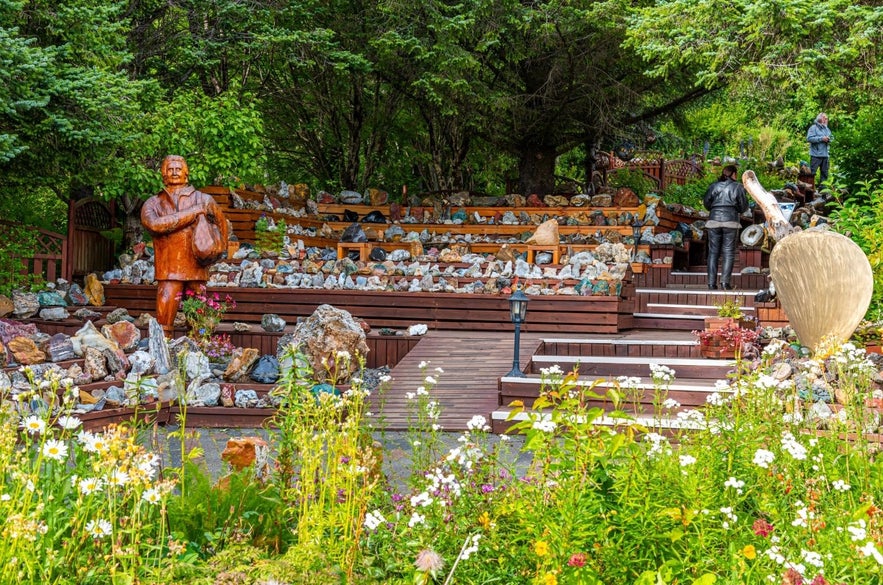 Petra passed away on the 10th of January 2012, though her memory lives on in her incredible collection and with the thousands that visit it each year. Her beautiful garden is one of the highlights of the Eastfjords, so don't miss out on it during your travels.
Petra passed away on the 10th of January 2012, though her memory lives on in her incredible collection and with the thousands that visit it each year. Her beautiful garden is one of the highlights of the Eastfjords, so don't miss out on it during your travels.
The Ring Road runs through the town of Stodvarfjordur, making Petra's Stone and Mineral Collection a convenient stop, and you can do a nice lunch break at the on-site Café Sunno. It's open from the start of June to September 1st (10:00-16:00 every day), offering tea, coffee, hot soup, and fresh bread.
- See also: The Nature of Icelanders
1. The Vok Baths
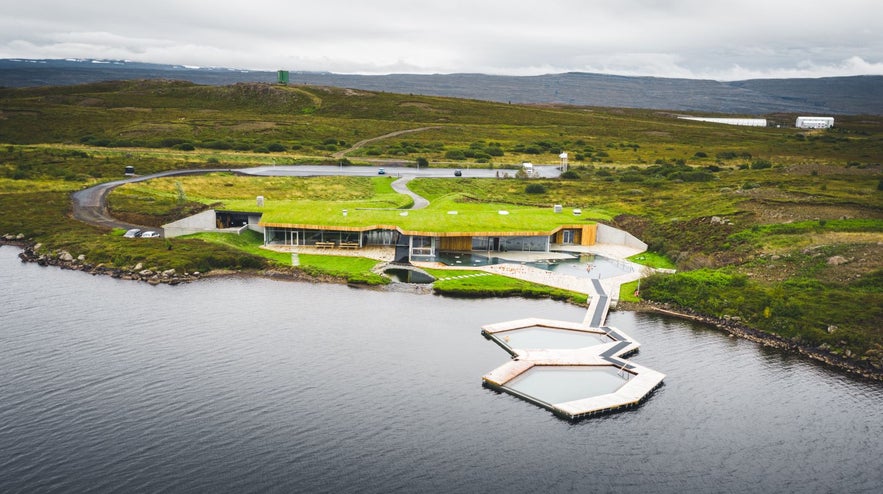 As the East of Iceland is known for its natural beauty and long winding roads through picturesque fjords, you can expect that you'll do quite a bit of driving, walking, and hiking to experience its many features. Knowing this, what could be better to include on your itinerary than a relaxing and luxurious soak in warm water after a day of adventuring?
As the East of Iceland is known for its natural beauty and long winding roads through picturesque fjords, you can expect that you'll do quite a bit of driving, walking, and hiking to experience its many features. Knowing this, what could be better to include on your itinerary than a relaxing and luxurious soak in warm water after a day of adventuring?
The Vok Baths, located in the town of Egilsstadir, is a unique and spectacular spa that offers a completely distinctive experience. It opened in 2019 on Lake Urridavatn and is heated geothermally.
You can relax in four pools, though of those, the two floating piers are a special highlight of the spa. All four pools vary in temperature, allowing you to customize your visit according to your preference.
Photo from Admission to the Serene Vok Baths of East Iceland near Egilsstadir
Don't miss out on the sauna or the refreshing cold mist tunnel, as the change in temperatures can create a bathing experience that's both invigorating and rejuvenating. If you've been hiking a lot or have been cramped in a car for long periods of time, you may also want to try the in-water massage.
While you're soaking in the warm water, you can enjoy a cold drink from their extensive menu, with or without alcohol. They also offer a variety of organic herbal teas at their Tea Bar, served either hot or cold. After staying a while, you can grab a bite at the Vok Bistro, where you'll find dishes that are inspired by Europe and Asia but made from local ingredients.
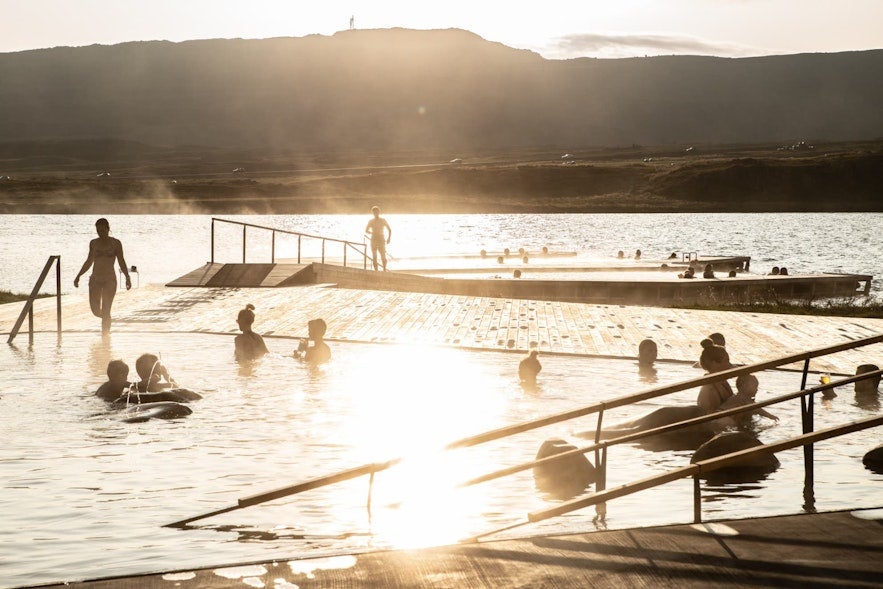
Photo from Stunning 7-Hour Summer Tour to Studlagil Canyon and the Vok Baths from Egilsstadir
The Vok Baths are open year-round, and different times of year will offer unique advantages. Summer will be best to enjoy the beautiful view, and those few hot days will be perfect for unwinding on the piers. Spring and fall will be the perfect times to see the beautiful sunset, and winter will provide the chance to spot the northern lights. The chilly air will also create a refreshing contrast with the warm water.
No matter what time of year you're visiting East Iceland, make sure to include a moment of relaxation on your itinerary. It's a popular location, so it's best to book your admission to the Vok Baths ahead of time when planning your trip.
- See more about the Top 10 Geothermal Spas in Iceland
- See also: The 30 Best Hot Springs and Geothermal Pools in Iceland
Top 5 Towns to Visit in East Iceland
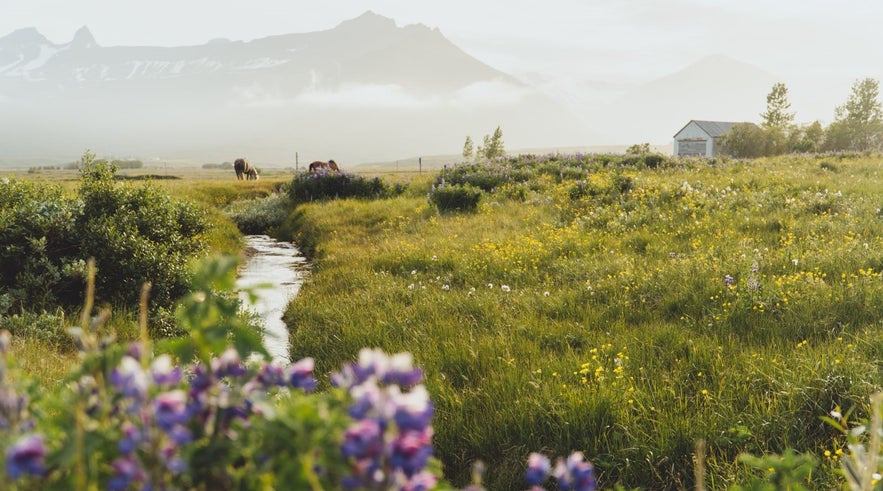 The East of Iceland features many tiny fishing towns and villages that each have their own unique features and attractions. Here are some that are not to be missed during your Eastfjord journey.
The East of Iceland features many tiny fishing towns and villages that each have their own unique features and attractions. Here are some that are not to be missed during your Eastfjord journey.
5. Djupivogur
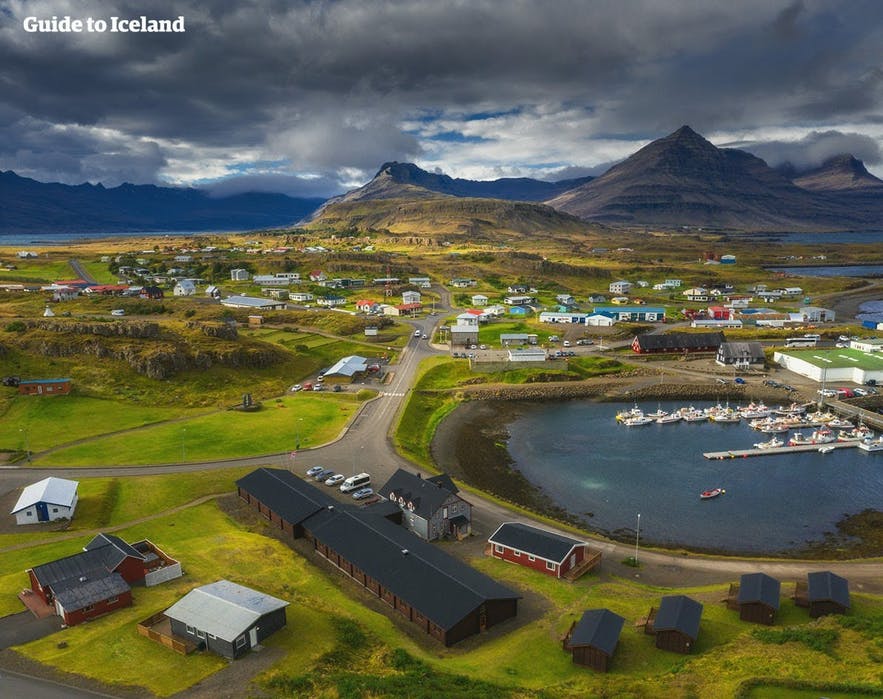
Djupivogur is a quiet town that has a population of just over 400 people. It's located on the Berufjord fjord and is the perfect spot for admiring the Bulandstindur mountain.
The town has a rich history as a trading center that reaches back to the 16th century. The oldest still-standing house in the town, Langabud, was a storehouse that now houses a history and art museum. The town is also known for one of its past inhabitants, Hans Jonatan (1784-1827), the first person of color to settle down in Iceland.
Djupivogur's most iconic attraction is the "Eggs of Gledivik," an outdoor artwork by Sigurður Guðmundsson. This installation features 34 oversized granite eggs, each representing a different bird species native to the area, that line the edge of the harbor.
Photo from a Relaxing 2-Hour Kayaking Tour in Eastfjords from Djupivogur
Off the coast of Djupivogur, you can go kayaking, like with this 2-hour kayaking tour of the Berufjordur fjord. You can also take a short boat trip to the nearby Papey island. This uninhabited isle is home to colonies of puffins, seals, and a rich array of flora. The island’s old wooden church and the lighthouse add a touch of historical allure.
Where to Stay in Djupivogur
This picturesque town perfectly captures the quiet charm of East Iceland. Make sure to include it as a stop on your journey. To enjoy everything the town has to offer, you can find accommodation in Djupivogur. There are great options to choose from, like the Berunes HI Hostel, a traditional Icelandic farmhouse that will make for a cozy base for your adventures. It has an average rating of 4.7 out of 5 stars from over 250 guests.
- Find out more about the Top 9 Most Famous Icelanders in History
- See more: Where did Icelanders Come From?
4. Faskrudsfjordur
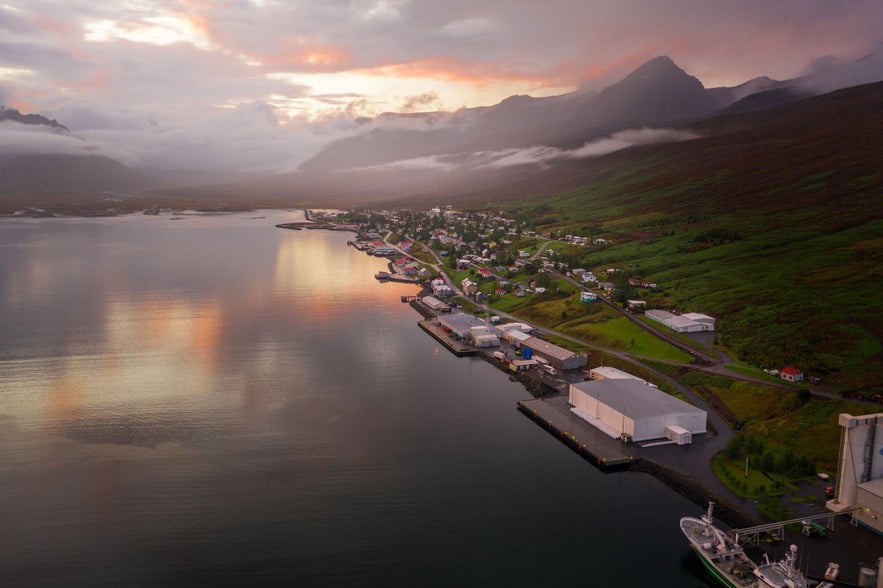 The small village of Faskrudsfjordur is sometimes called the French town of Iceland, as it used to be one of the main fishing stations for French sailors in the country. French fishing boats were regular visitors along Icelandic coasts from the year 1614, only coming to an end at the start of the First World War.
The small village of Faskrudsfjordur is sometimes called the French town of Iceland, as it used to be one of the main fishing stations for French sailors in the country. French fishing boats were regular visitors along Icelandic coasts from the year 1614, only coming to an end at the start of the First World War.
The French influence can be felt around the town, as many street names are written in French and Icelandic, and old houses have been restored. Every summer, the town hosts the French Days Festival, celebrating its history with music, games, and fun activities.
During your visit, take the time to visit the French Museum, located in an old hospital that was built by the French, where you can learn about the lives of sailors through a great immersive interactive exhibition. This is an especially fun activity if you're traveling with children.
 Faskrudsfjordur is nestled between the mountains and the sea, offering ample opportunities for hiking, bird-watching, and fishing. You can explore the beautiful cascading waterfalls and rich birdlife in the nearby vicinity.
Faskrudsfjordur is nestled between the mountains and the sea, offering ample opportunities for hiking, bird-watching, and fishing. You can explore the beautiful cascading waterfalls and rich birdlife in the nearby vicinity.
If you have the time, we recommend taking on the hike to Mt. Sandfell for amazing views of the fjord. With a warm community and engaging history, the quaint town of Faskrudsfjordur offers an enriching atmosphere, making it a must-visit destination in your East Iceland adventure.
Where to Stay in Faskrudsfjordur
If you want to make the beautiful Faskrudsfjordur a base for your travels or simply want to enjoy the small-town charm, you can find a hotel, guesthouse, or other accommodation in the area. A very special place to stay in the town is the Fosshotel Eastfjords, as it's located in a part of the historic French Hospital building. It has an average rating of 4.4 out of 5 stars from over 460 guests.
3. Borgarfjordur Eystri
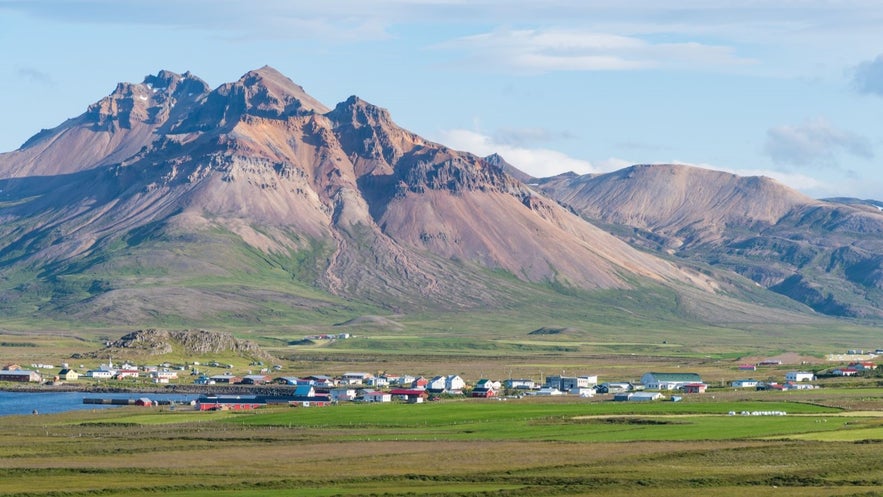 Borgarfjordur Eystri is a fjord in East Iceland, not to be confused with simply Borgarfjordur, which is in West Iceland. The main settlement in the fjord is Bakkagerdi which has a total population of around 100 people, though it's usually simply referred to by the name Borgarfjordur Eystri by Icelanders.
Borgarfjordur Eystri is a fjord in East Iceland, not to be confused with simply Borgarfjordur, which is in West Iceland. The main settlement in the fjord is Bakkagerdi which has a total population of around 100 people, though it's usually simply referred to by the name Borgarfjordur Eystri by Icelanders.
Surrounded by beautiful mountains, this coastal town is one of the best places to see puffins in Iceland. About 10.000 pairs of puffins nest by the beautiful Hafnarholmi cliffs every summer, where you can easily spot them.
If you want a closer look at these adorable birds, with their striking beaks and whimsical waddles, you can embark on a puffin tour with a RIB boat, where you'll be able to see them from otherwise inaccessible areas. You can also enjoy a guided visit to Hafnarholmi to make the most of your trip.
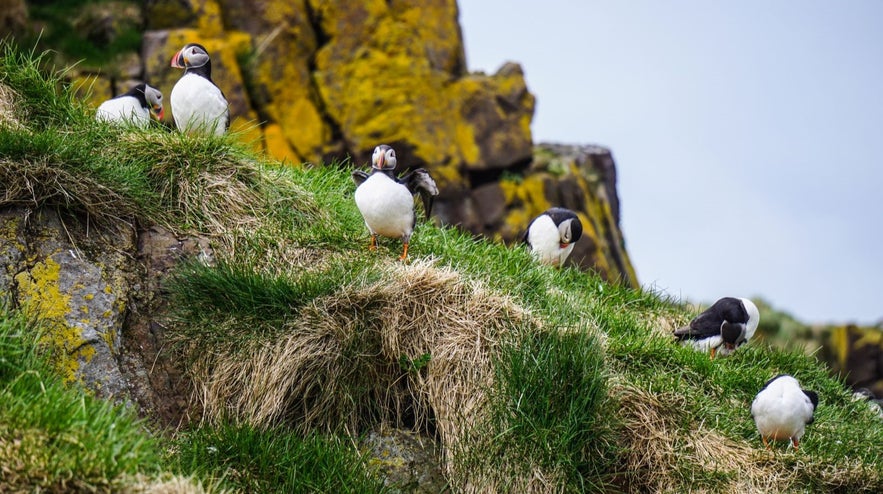 Take the time to explore the surrounding nature, as Borgarfjordur Eystri has some of the best-organized hiking areas in Iceland. This includes the hike to the magnificent Storurd boulders and Dyrfjoll mountains. The village is also located by one of the region's central features, the Alfaborg rock, where, according to Icelandic folklore, the Queen of Elves supposedly lives.
Take the time to explore the surrounding nature, as Borgarfjordur Eystri has some of the best-organized hiking areas in Iceland. This includes the hike to the magnificent Storurd boulders and Dyrfjoll mountains. The village is also located by one of the region's central features, the Alfaborg rock, where, according to Icelandic folklore, the Queen of Elves supposedly lives.
While you explore the town of Borgarfjordur Eystri after a day of hiking and adventuring, make sure to try the local beer or gin from the KHB Brewery. They're also the only brewery in the country to produce Icelandic moonshine, known as "Landi," so don't miss out on experiencing it. This will be most enjoyable if you plan to stay a night in Borgarfjordur Eystri so you don't have to worry about driving.
Where to Stay in Borgarfjordur Eystri
Make sure to include Borgarfjordur Eystri on your itinerary for its special attractions. Don't miss out on seeing the puffins, surrounding nature, and local charm. You can find great accommodation options in the town of Bakkagerdi, and a truly special one is the Blabjorg Guesthouse.
Located in a renovated old fish factory, this modern and comfortable place offers rooms with both private and shared bathrooms, laundry services, and a spa with charming outdoor hot tubs. It has an average rating of 4.7 out of 5 stars from over 280 visitors.
2. Seydisfjordur
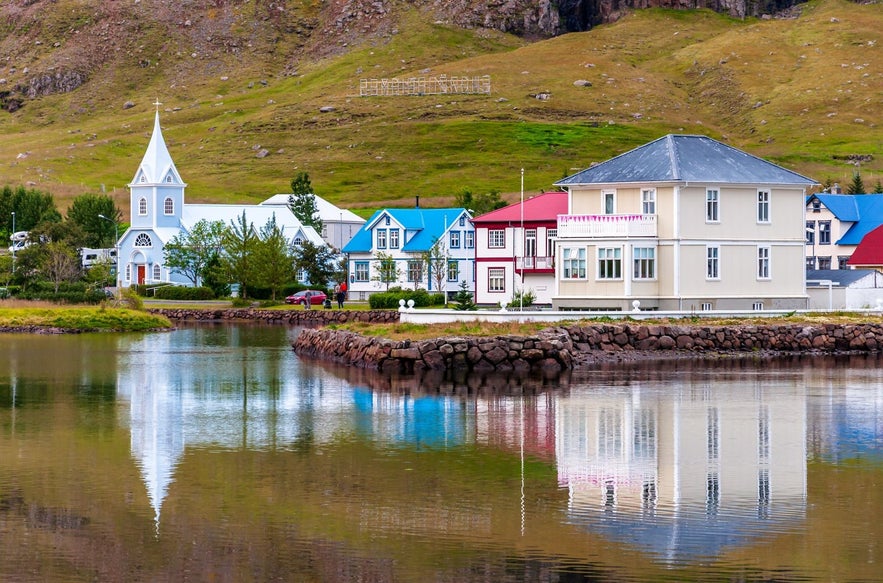 The vast majority of those traveling to Iceland for the first time will arrive at Keflavik International Airport in the southwest part of Iceland. However, there are some who will first set their eyes upon the island’s eastern shores when visiting, arriving by ferry to the small fishing town of Seydisfjordur.
The vast majority of those traveling to Iceland for the first time will arrive at Keflavik International Airport in the southwest part of Iceland. However, there are some who will first set their eyes upon the island’s eastern shores when visiting, arriving by ferry to the small fishing town of Seydisfjordur.
In recent years, Seydisfjordur has become one of the most popular towns in the Eastfjords. It's known for its great number of well-preserved wooden buildings and its iconic blue church that stands in front of a rainbow-painted street. This town really captures the unique charm of Icelandic culture and history, enhanced by its thriving art scene.
Art lovers visiting Seydisfjordur should stop by Skaftfell, the center for art in East Iceland and a haven for the creative community in the area. If you're visiting in July, you can also go to the annual LungA Art Festival, where artists infuse the town with creativity through different events. In February, there's also the beautiful "List í Ljósi" Art Festival, dedicated to lighting up the winter darkness.
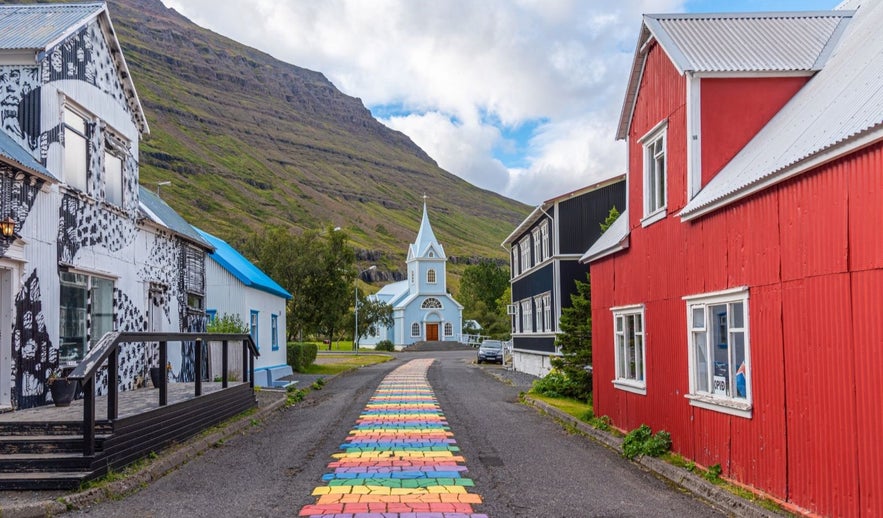 The location makes a good base for exploring the Eastfjords, with nearby cafés and restaurants and tours operating from there. You can easily go from Seydisfjordur to see nearby attractions by rental car, preferably a 4x4 vehicle.
The location makes a good base for exploring the Eastfjords, with nearby cafés and restaurants and tours operating from there. You can easily go from Seydisfjordur to see nearby attractions by rental car, preferably a 4x4 vehicle.
If you prefer to skip the drive, you can book this 7-hour nature and culture tour of the Eastfjords or embark on a 10-hour East Iceland tour that includes the Highlands, perfect if you don't want to rent a 4x4 car but want to see the beauty of the remotest part of Iceland.
One additional incentive to include Seydisfjordur on your itinerary is to support the local community, as it has faced difficulty in recent years.
In December 2020, a total of 13 buildings were destroyed by the largest landslide to ever hit a town in Iceland. Mercifully, nobody was harmed in the disaster, but infrastructure was damaged, and some people lost their homes and jobs. What followed was an enormous economic loss and difficulty for locals.
The Technical Museum of East Iceland was hit especially hard as many of its artifacts and preserved houses were lost. Since then, the museum has taken on the enormous task of reorganizing and restoring what remains of its catalog, and today, you can visit the Technical Museum's new exhibitions, one of which is dedicated to the landslide.
Where to Stay in Seydisfjordur
As the town is bustling with activities and is greatly located for further Eastfjord day trips, it's a good idea to stay a night or two there. You can find many accommodation options in Seydisfjordur, some of which are in charming old traditional buildings that the town is known for.
A popular option is the Hafaldan HI Hostel, that's located in a beautiful old hospital building. It offers cozy rooms with modern amenities, and you can choose from affordable shared spaces or private rooms. It has an average rating of 4.6 out of 5 stars from over 250 visitors.
1. Egilsstadir
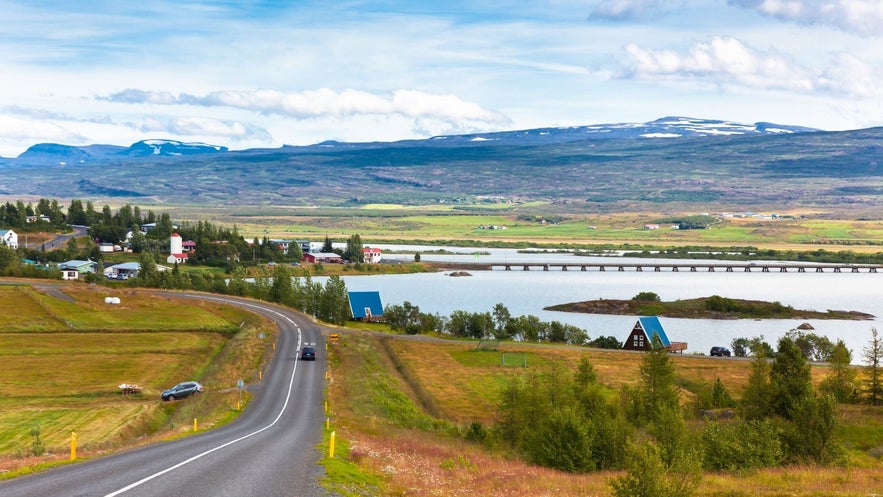 The largest town in the East of Iceland is Egilsstadir which offers an array of unique benefits to travelers. Its location makes for a great base for exploring the region, allowing you to be more strategic with your travel time when visiting multiple attractions.
The largest town in the East of Iceland is Egilsstadir which offers an array of unique benefits to travelers. Its location makes for a great base for exploring the region, allowing you to be more strategic with your travel time when visiting multiple attractions.
Egilsstadir is just a 15-minute drive from lake Lagarfljot and Hallormsstadarskogur, a 30-minute drive from Seydisfjordur and Skriduklaustur, and an hour's drive from the Wilderness Center, enabling you to maximize any day trip. There are also tours that operate from the town that let you explore what the region has to offer, like this stunning 12-hour hiking tour to Snaefell or this magical 3-day hiking tour of the Eastfjords that includes puffin watching!
After a day of exploring, you can unwind in the luxurious Vok Baths, which are just a 5-minute drive from the town center.
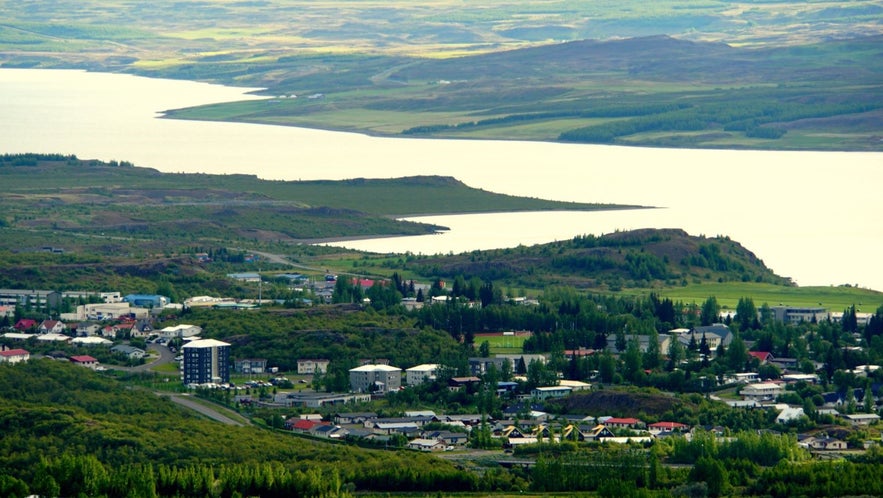 Egilsstadir is also worth exploring, as you can step into the history of the region at the East Iceland Heritage Museum or the Snaefellsstofa, the visitor center for the east part of Vatnajokull National Park, which includes a great nature exhibition.
Egilsstadir is also worth exploring, as you can step into the history of the region at the East Iceland Heritage Museum or the Snaefellsstofa, the visitor center for the east part of Vatnajokull National Park, which includes a great nature exhibition.
You can also find great souvenirs at local handicraft and design stores and enjoy a bite to eat at the local cafés and restaurants. If you're looking for a more unique activity, you can try this exciting axe-throwing tour on the outskirts of Egilsstadir, the perfect outlet for pent-up stress and frustration.
Where to Stay in Egilsstadir
When planning your East Iceland trip, you can find many accommodation options in Egilsstadir. The town has all necessary services and is well connected to the rest of Iceland with its domestic airport and location along the Ring Road. It's the obvious choice for a place to stay when exploring the Eastfjords of Iceland.
A good option for accommodation is the Hotel 1001 Nott, which offers modern rooms with beautiful views over lake Lagafljot. They also have an onsite restaurant and bar, and outdoor hottubs. Over 160 guests have given their stay an average rating of 4.9 out of 5 stars.
Which places in East Iceland would be on top of your list? If you've visited before, what are some of your favorite holiday memories from East Iceland? And do you feel there are any locations we're missing? Make sure to leave your thoughts in the comments below!
บทความอื่นที่น่าสนใจ
10 อันดับทัวร์ที่ดีที่สุดในไอซ์แลนด์: ทัวร์ยอดนิยมและไม่เหมือนใคร
ค้นพบ 10 อันดับทัวร์ที่ดีที่สุดในไอซ์แลนด์ ซึ่งครอบคลุมทุกอย่างตั้งแต่ธรรมชาติอันเงียบสงบไปจนถึงการผจญภัยที่น่าตื่นเต้น เรียนรู้เกี่ยวกับสถานที่ท่องเที่ยวยอดนิยมของประเทศ รวมถึงทัวร์และทริปเที่ยวที่...อ่านเพิ่ม
ไอซ์แลนด์ในฤดูหนาว - สุดยอดคู่มือท่องเที่ยว
ไอซ์แลนด์มีชื่อเสียงในด้านภูมิประเทศที่น่าทึ่ง และในช่วงฤดูหนาว เป็นเวลาที่เหมาะที่สุดในการเพลิดเพลินไปกับแสงเหนือ เที่ยวถ้ำน้ำแข็ง หรือออกผจญภัยท่ามกลางหิมะ สัมผัสประสบการณ์ทุกสิ่งที่ประเทศมีให้ในช่ว...อ่านเพิ่ม
ไอซ์แลนด์ในฤดูใบไม้ร่วง - สุดยอดคู่มือท่องเที่ยว
ฤดูใบไม้ร่วงในประเทศไอซ์แลนด์เป็นช่วงเวลามหัศจรรย์ที่ธรรมชาติถูกปกคลุมไปด้วยสีสันที่หลากหลาย ทำให้เป็นเวลาที่ดีในการสำรวจประเทศ ค้นพบภูมิประเทศที่น่าทึ่ง ชมแสงเหนือ และเพลิดเพลินกับการผจญภัยในความเงีย...อ่านเพิ่ม

ดาวน์โหลดตลาดการท่องเที่ยวที่ใหญ่ที่สุดของไอซ์แลนด์ลงในโทรศัพท์ของคุณเพื่อจัดการการเดินทางทั้งหมดของคุณได้ในที่เดียว
สแกนรหัส QR นี้ด้วยกล้องในโทรศัพท์ของคุณแล้วกดลิงก์ที่ปรากฏขึ้นเพื่อเพิ่มตลาดการท่องเที่ยวที่ใหญ่ที่สุดของไอซ์แลนด์ไว้ในกระเป๋าของคุณ ป้อนหมายเลขโทรศัพท์หรือที่อยู่อีเมลของคุณเพื่อรับ SMS หรืออีเมลพร้อมลิงก์ดาวน์โหลด
